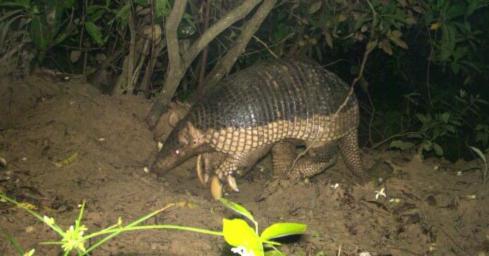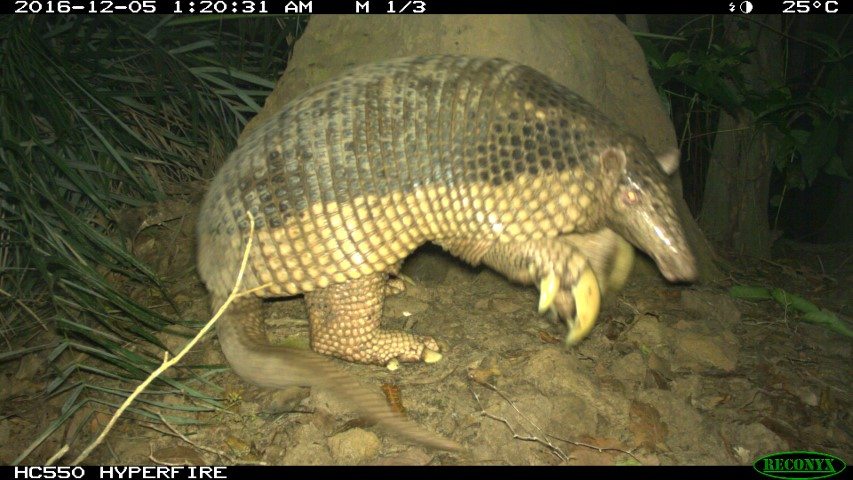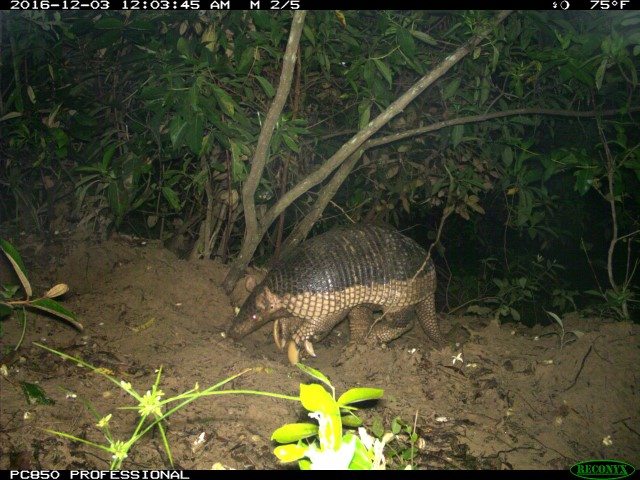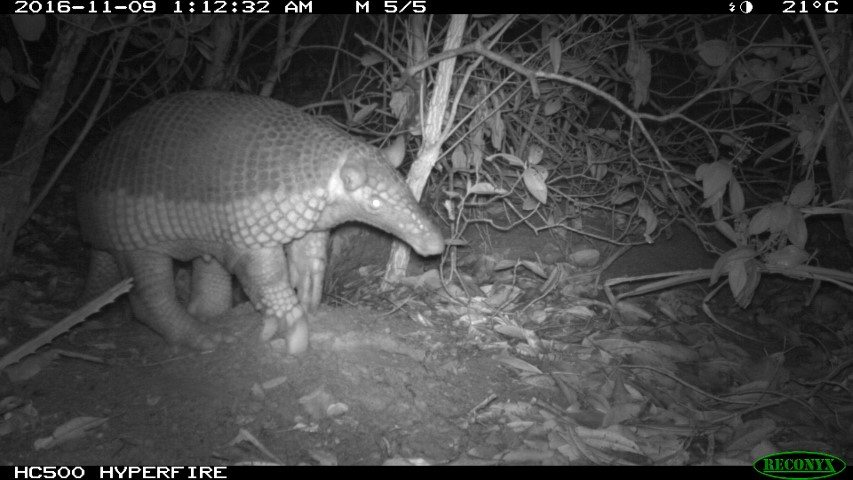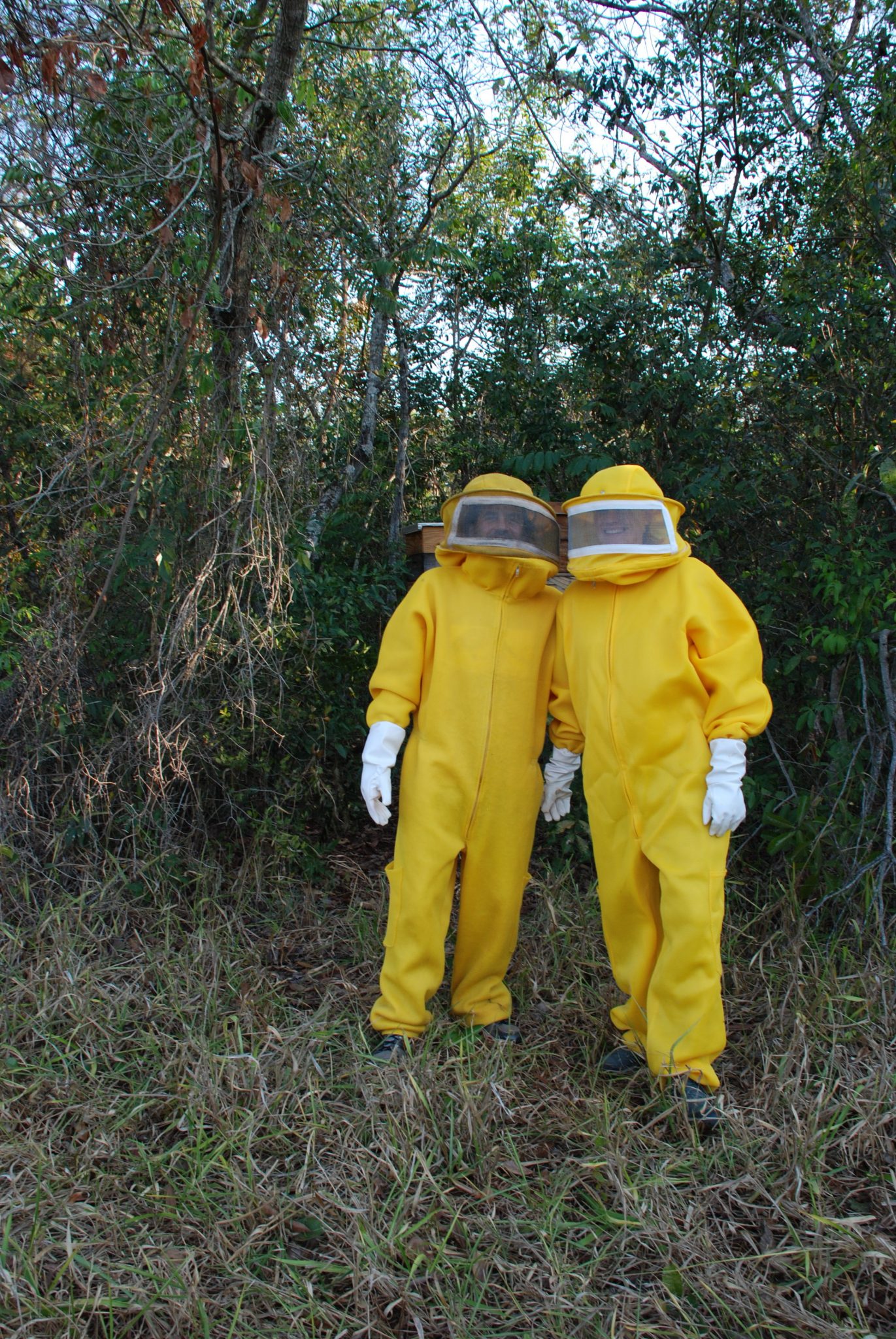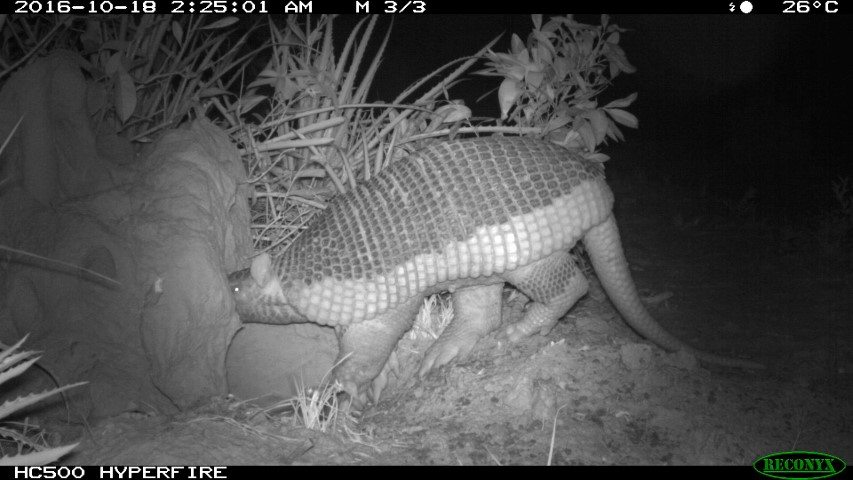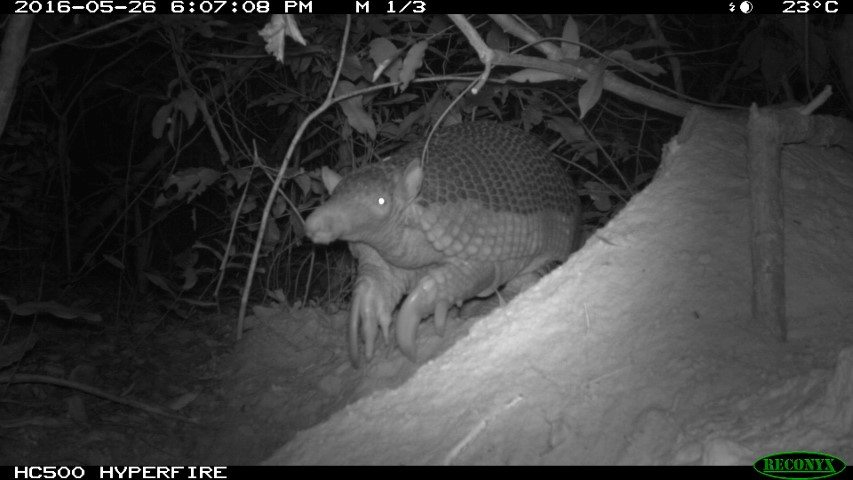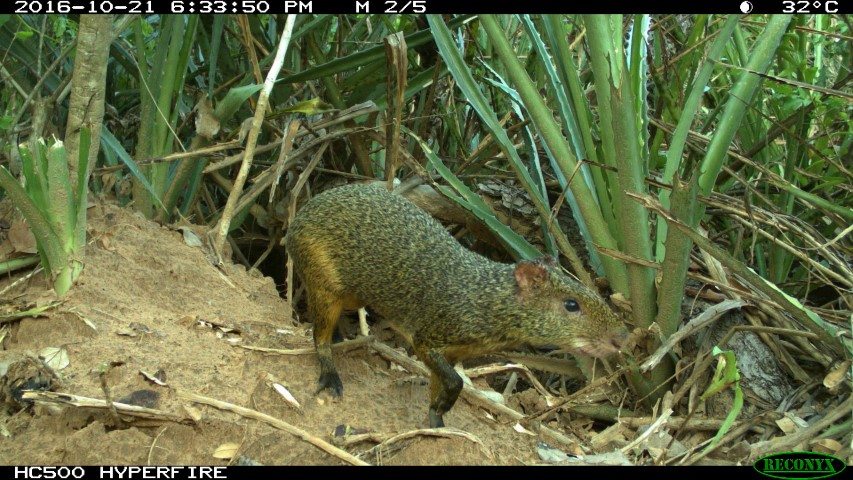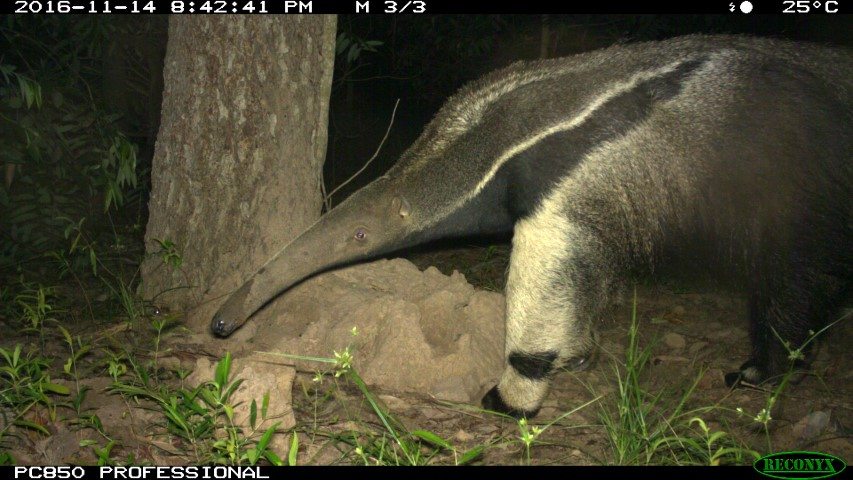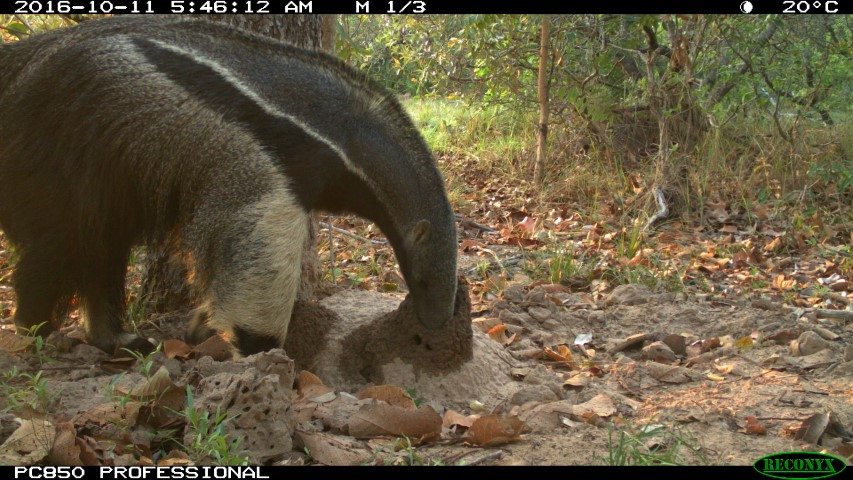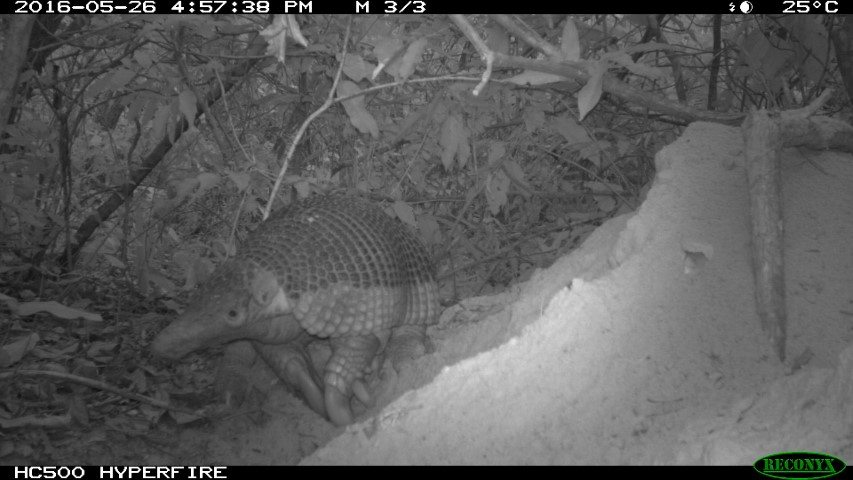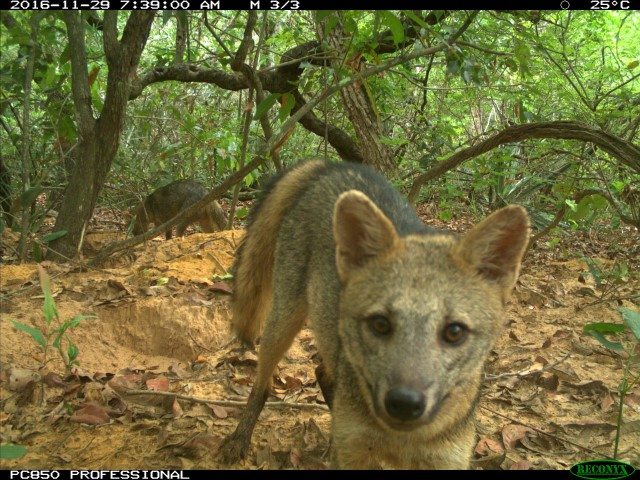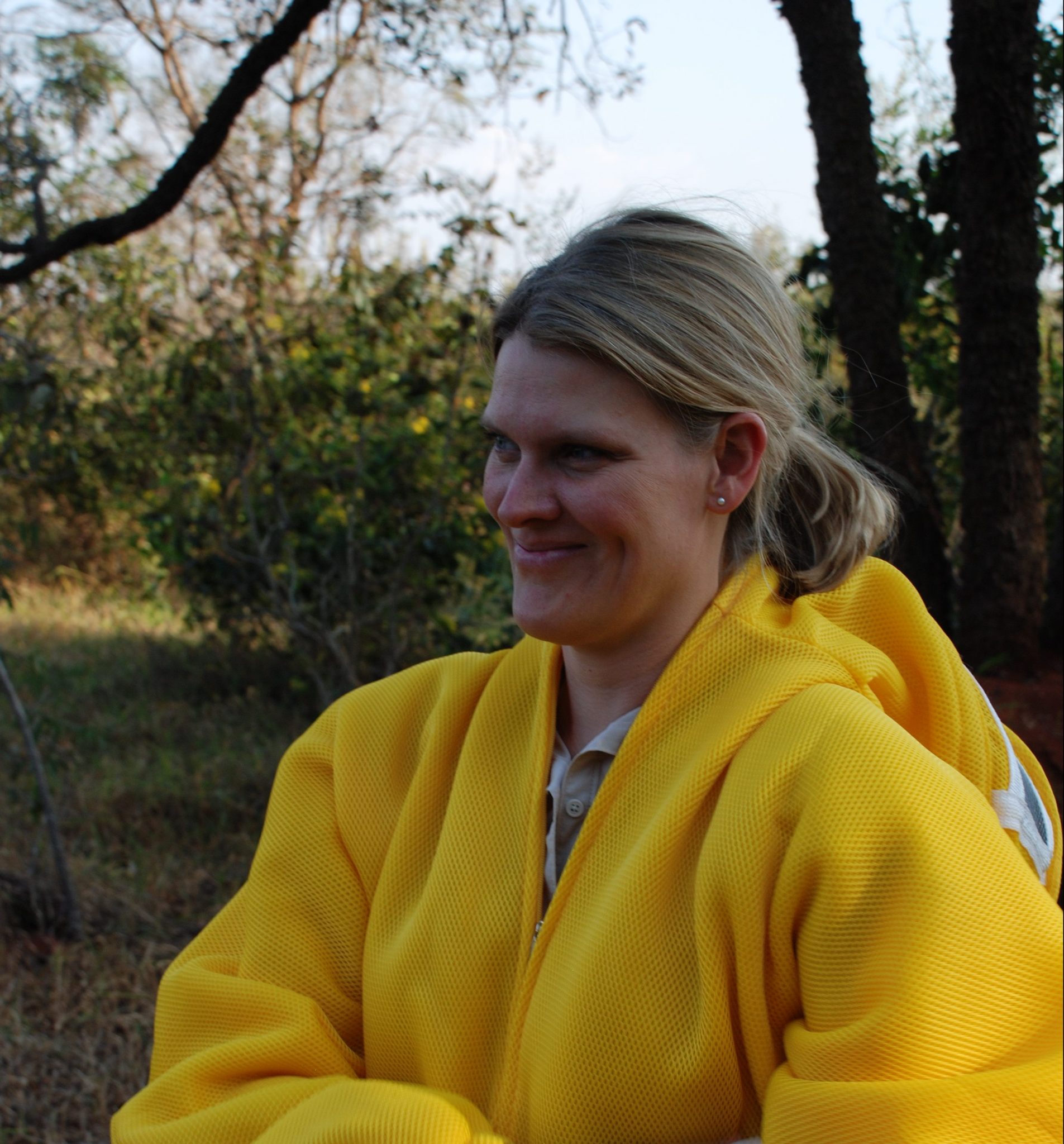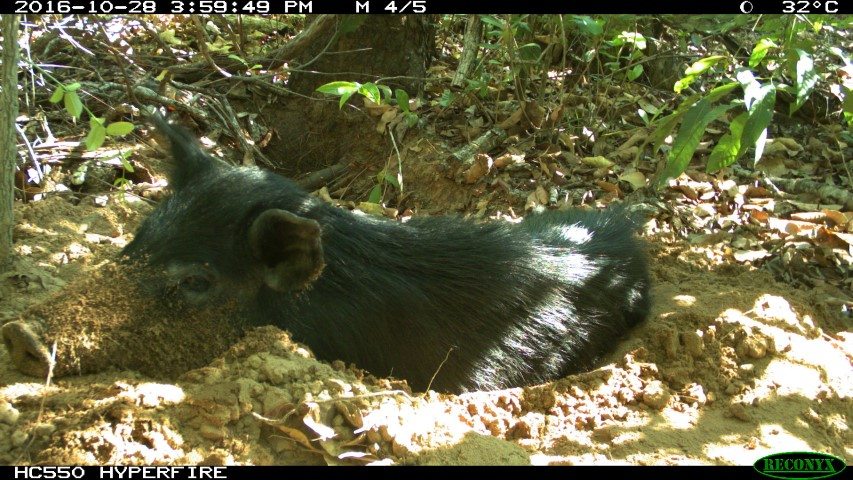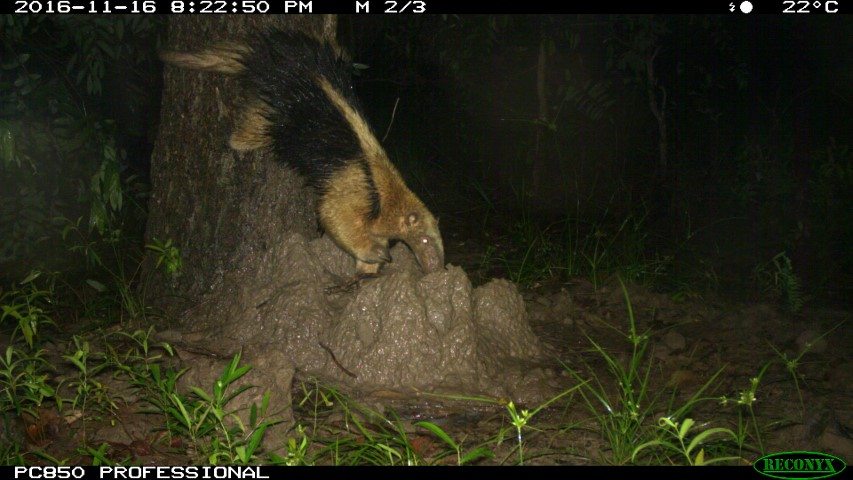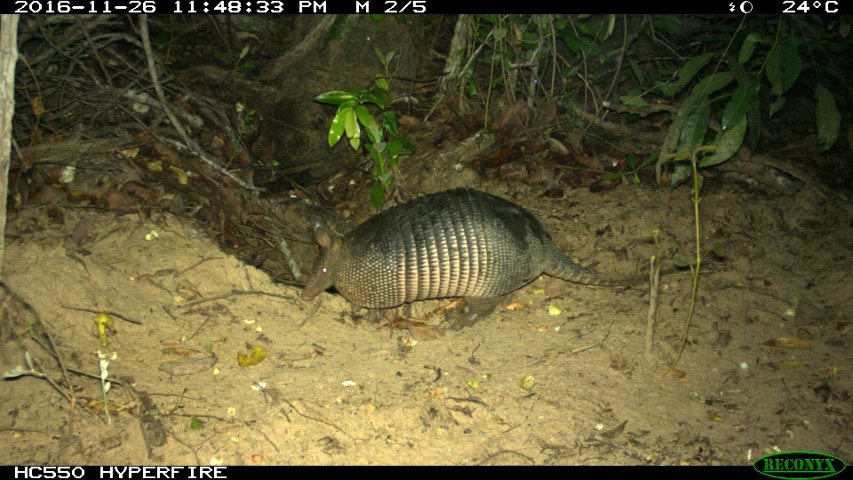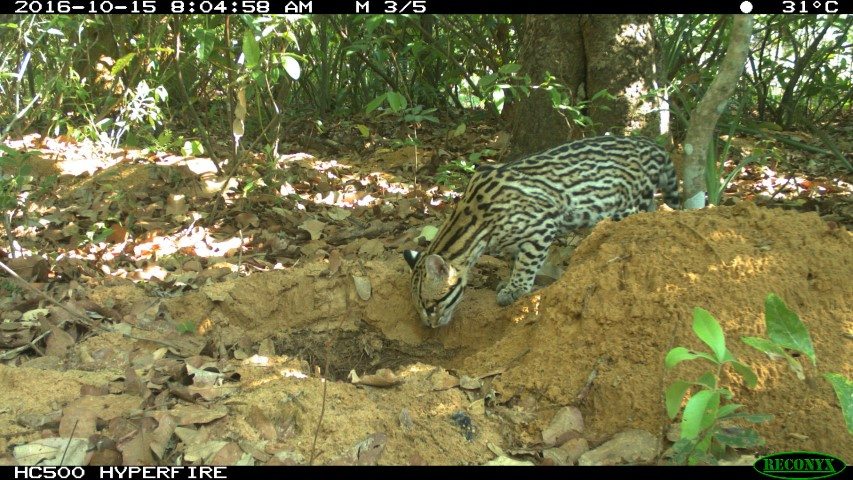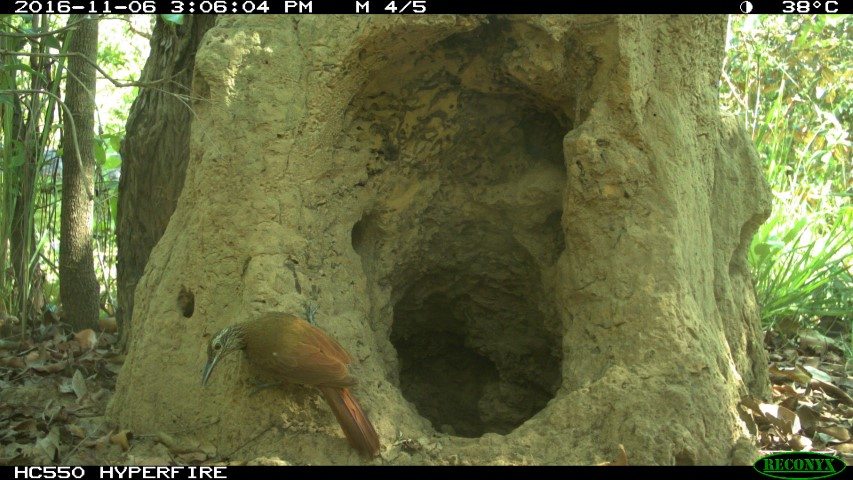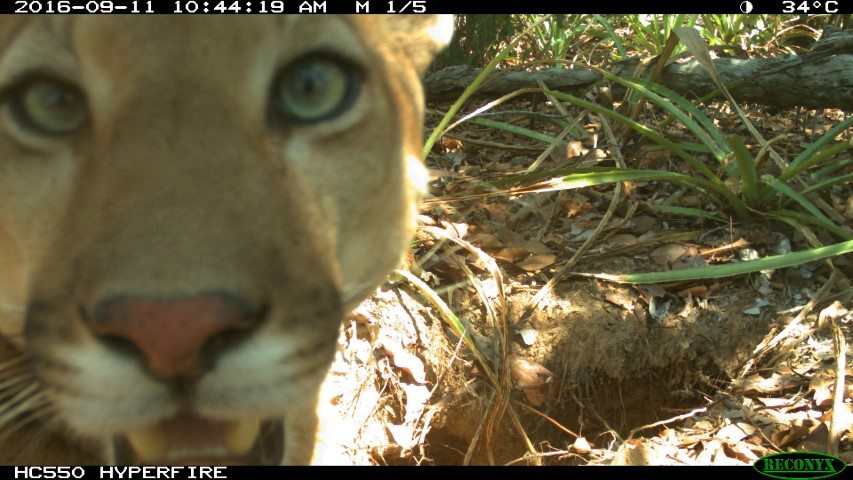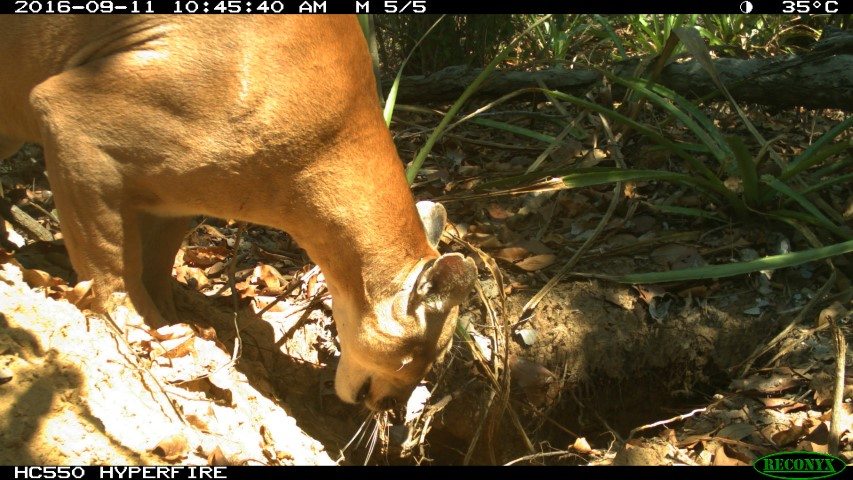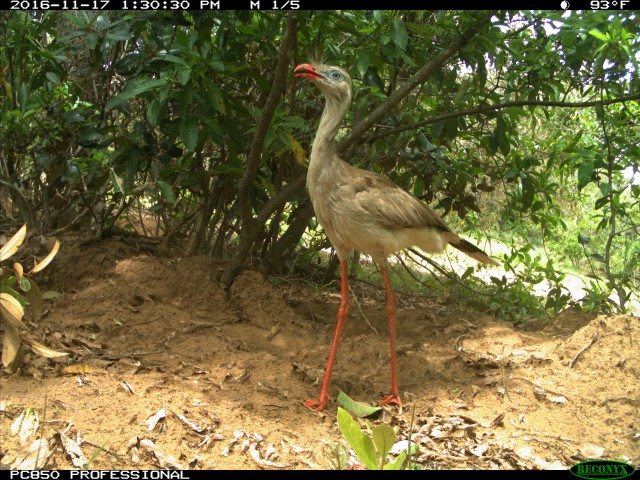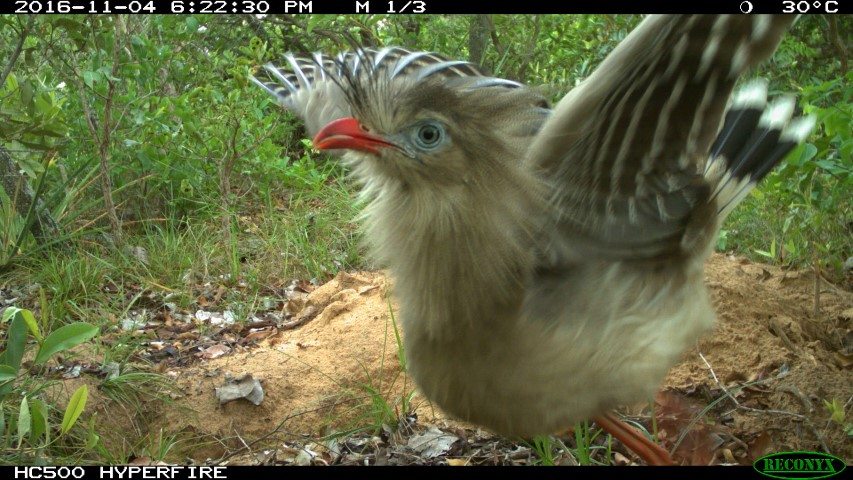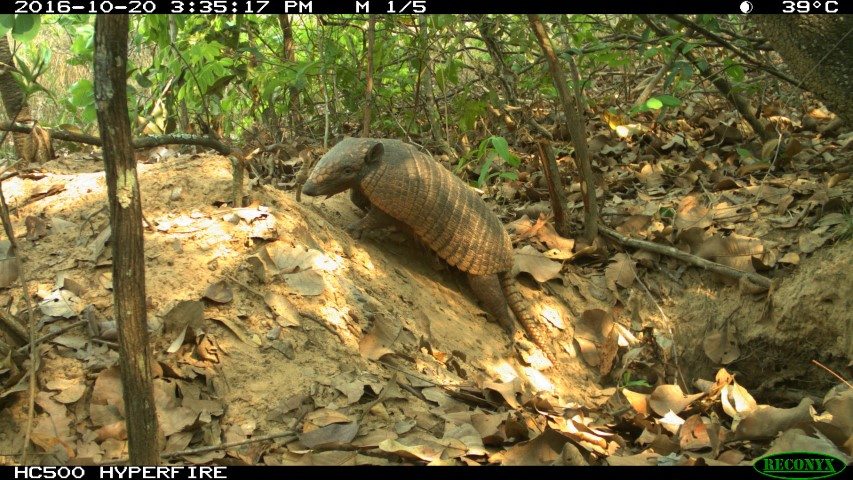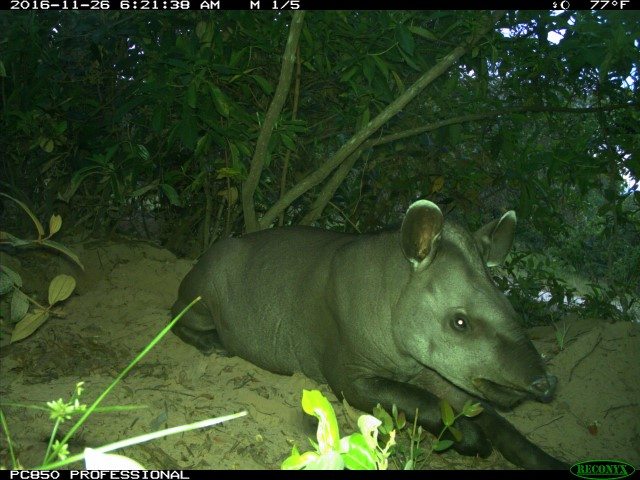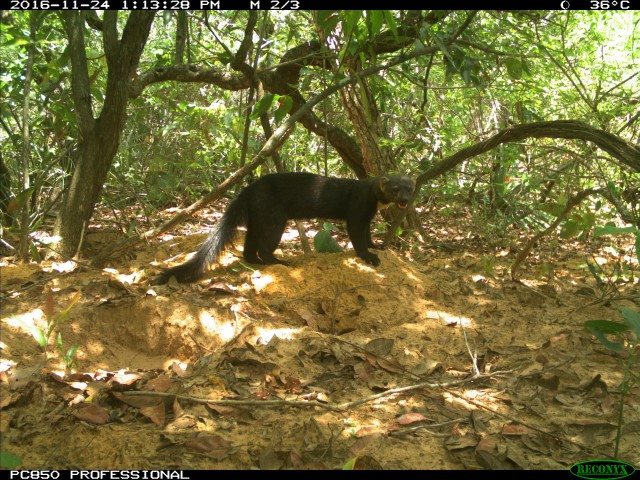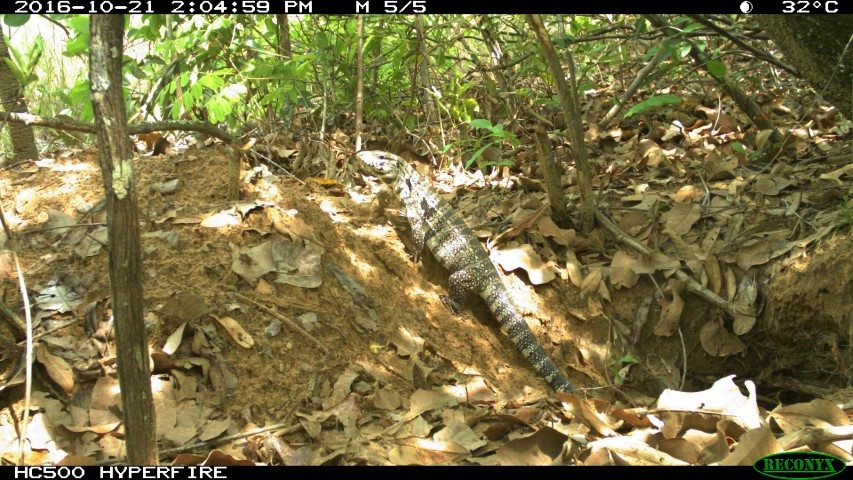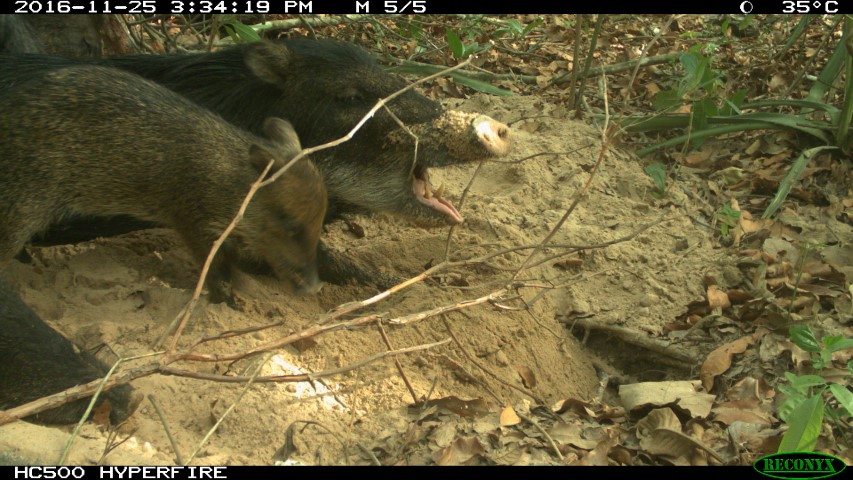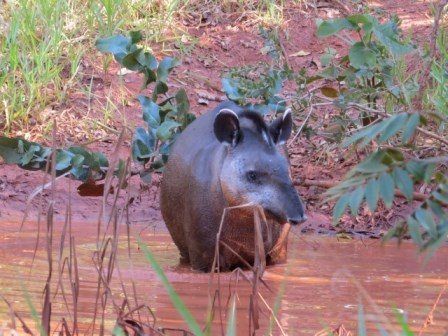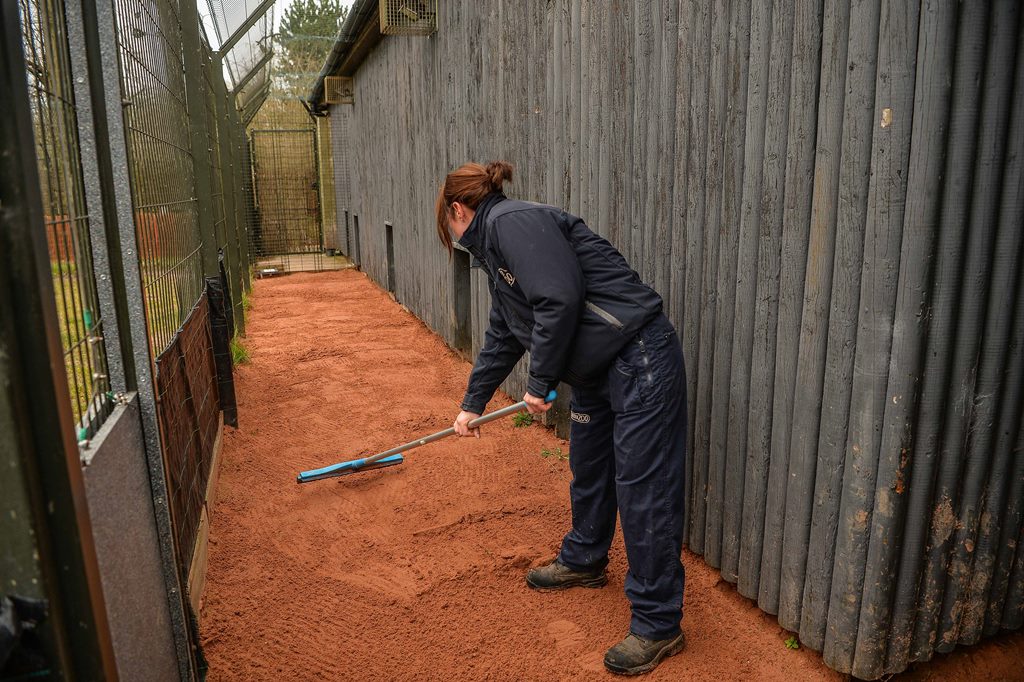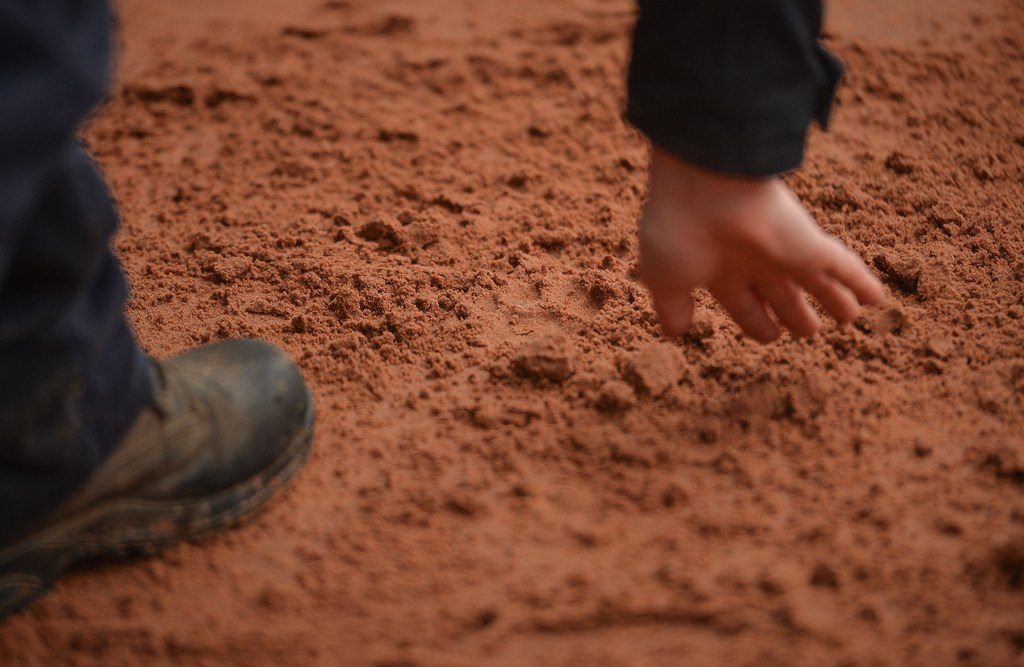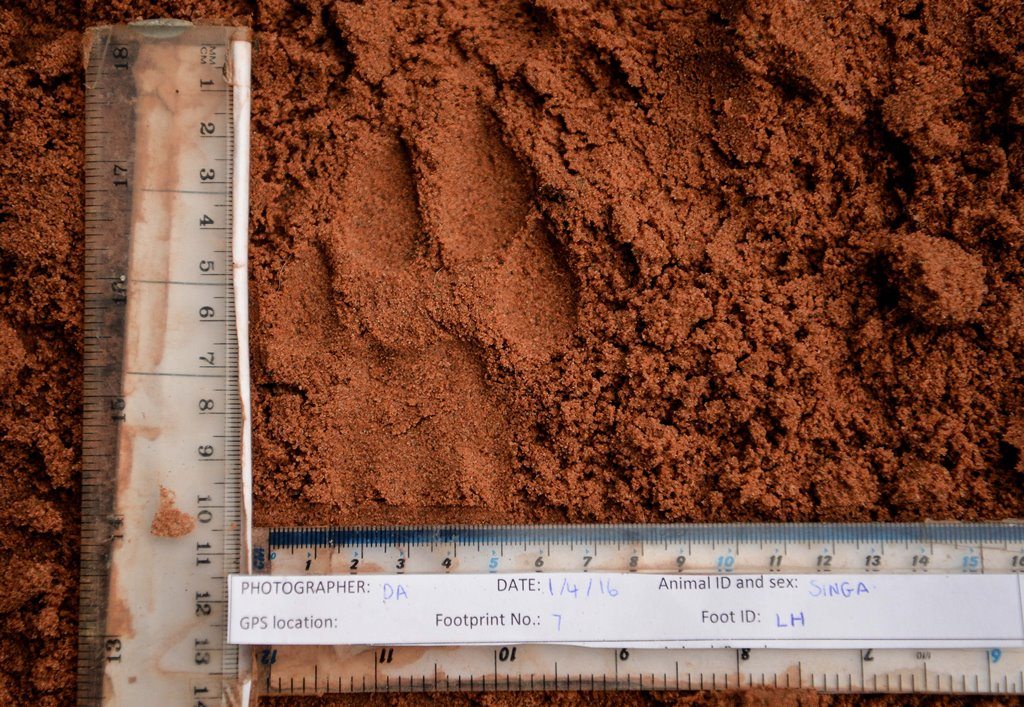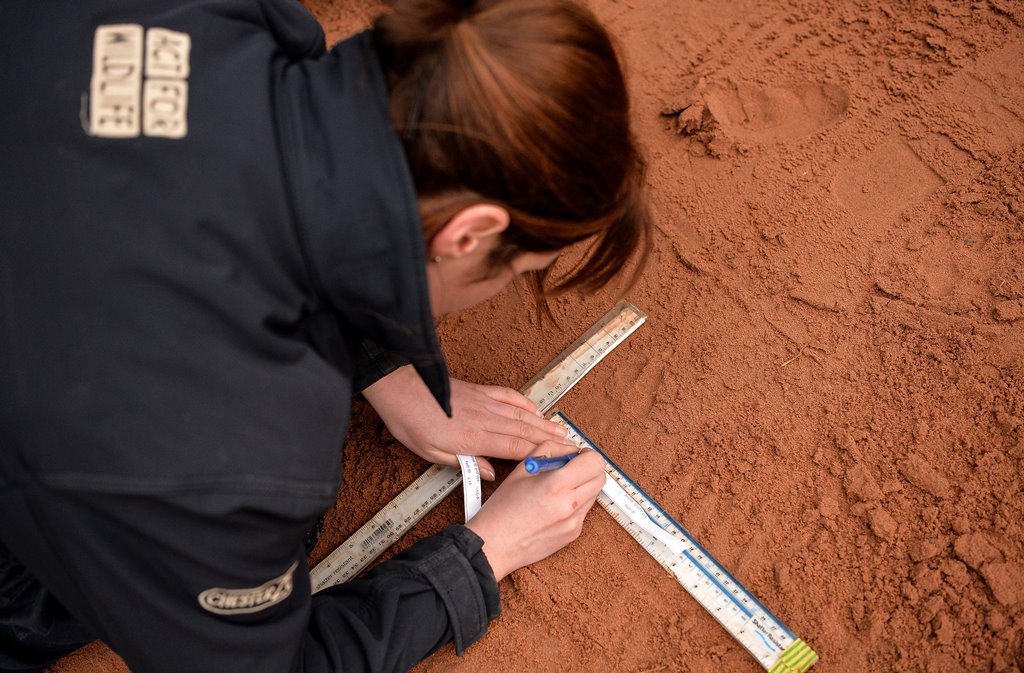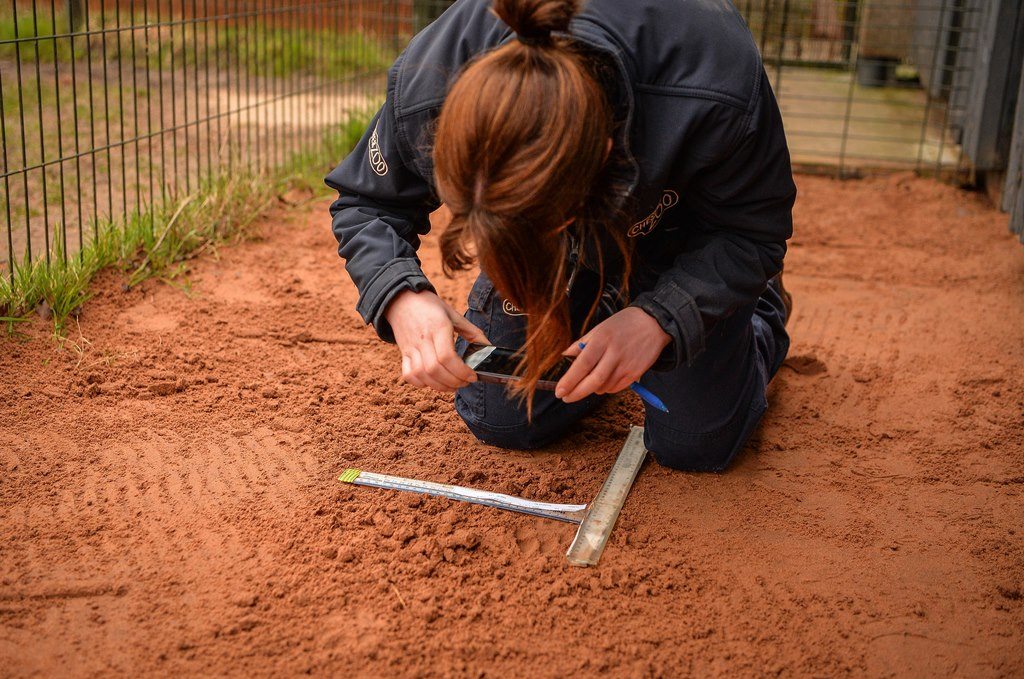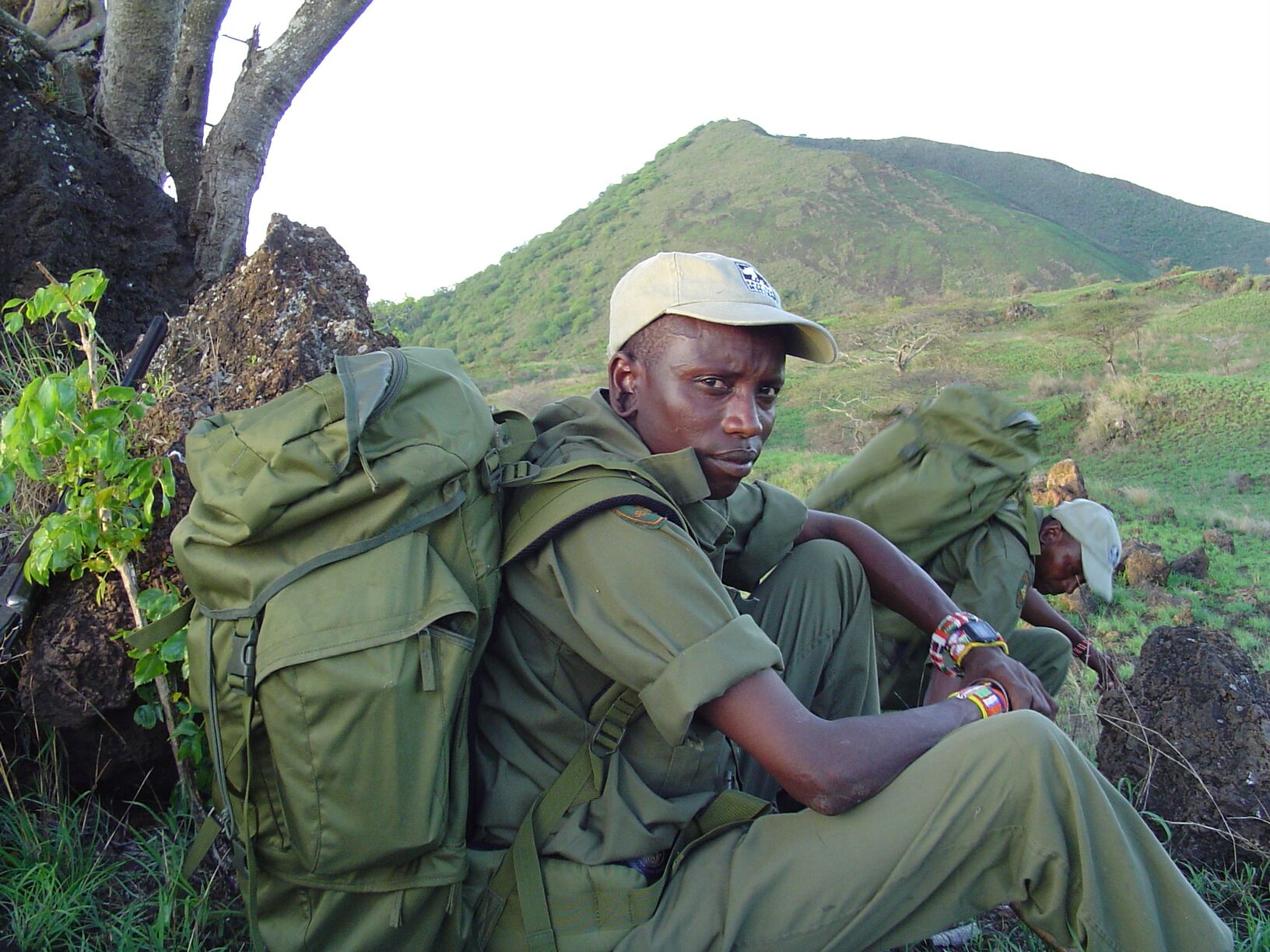Tag: Championing ecological research
Chester Zoo’s Andean Bear Project, developed and run in partnership with The University of Oxford’s Wildlife Conservation Research Unit (WildCRU) and Bolivian NGO Prometa, has won a prestigious Whitley Award.
Work supported by Chester Zoo to protect critically endangered Philippine cockatoos by employing former poachers as wardens is also being recognised at the ceremony taking place in London today (Thursday 18 May).
Run by the Whitley Fund for Nature, the international prize honours exceptional conservationists working in grassroots conservation projects in developing countries. The six winners were chosen from a total of 166 contenders from 66 countries.
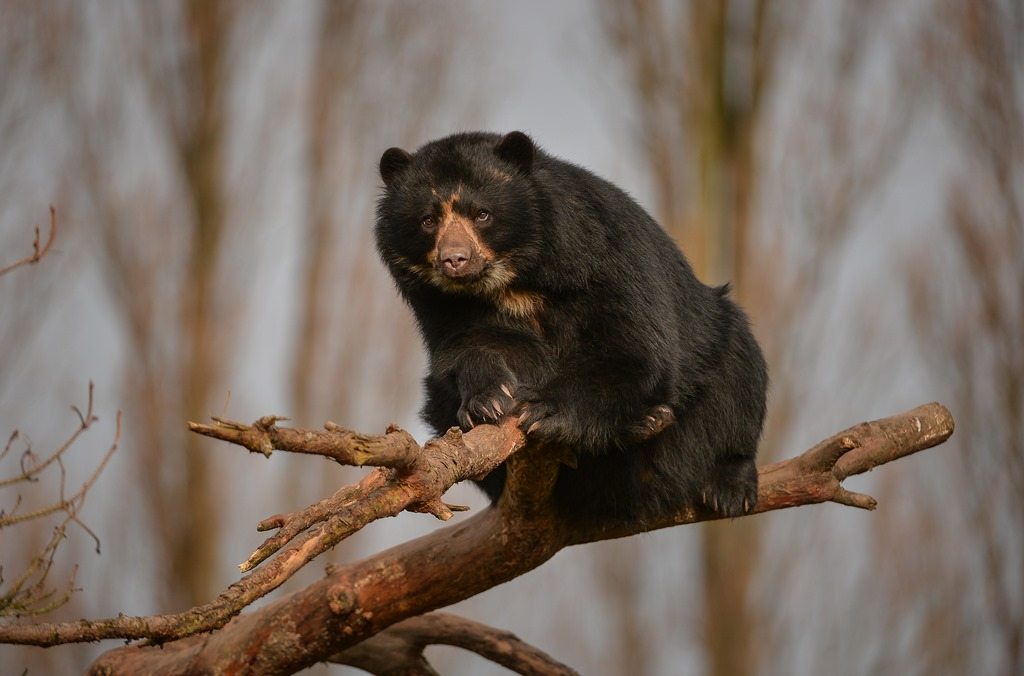
Dr Ximena Velez-Liendo, a Chester Zoo and WildCRU Conservation Fellow, is among this year’s winners with her project ‘An uphill climb: enabling coexistence of Andean bears and farmers in the Bolivian mountains’. Dr Ximena Velez-Liendo, Chester Zoo Conservation Fellow and Research Associate of WildCRU, said:
“Thanks to the Whitley Award, the funding will help us to get the research equipment we need to improve our understanding of the bears’ distribution and we will be able to work with more communities and expand our project.
I never imagined I would receive such an honour. The Whitley Awards are very prestigious and only the best of the best of conservation scientists receive them. It’s a dream come true!
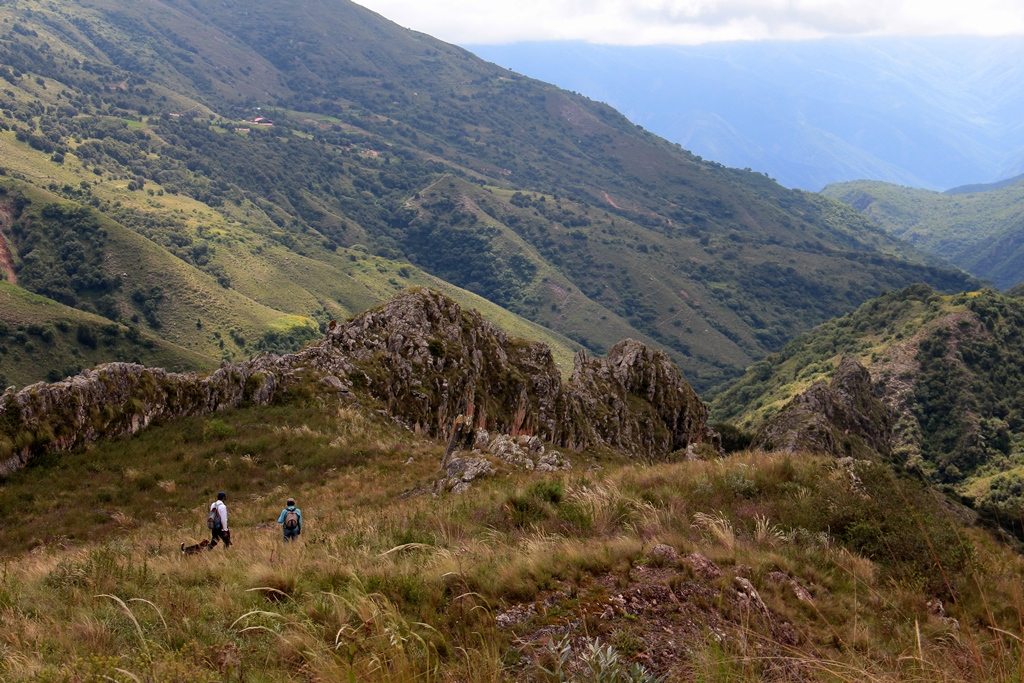
Earlier this year, we joined forces with WildCRU to deliver high-impact conservation research. This collaboration aims to provide new research to assist conservationists in developing innovative approaches to tackle global challenges such as human-wildlife conflict, livelihoods and sustainable development, and monitoring of populations of endangered species in the wild.
This project is key to our understanding of the human wildlife conflict facing Andean bears in their habitats in South America. This Whitley Award will provide the essential support we need to work with local communities, developing sustainable options for people to live alongside the species.
Indira Lacerna-Widmann, chief operating officer of the Katala Foundation, a Philippines-based organisation which successfully implemented the Philippine Cockatoo Conservation Programme (PCCP), is also among the prestigious winners with her project ‘Partnering with prisoners to safeguard the Critically Endangered Philippine cockatoo‘. Indira said:
“I am so grateful first to the cockatoos who remained resilient to fight against all odds over the years. This prestigious recognition I dedicate to all Filipinos but most esp to all Palaweños who take pride in conserving this beautiful bird. The Whitley Award will push our efforts to reach and engage more people in all walks of life – be it a prisoner in penal farm, a businessman, military personnel or anyone.”
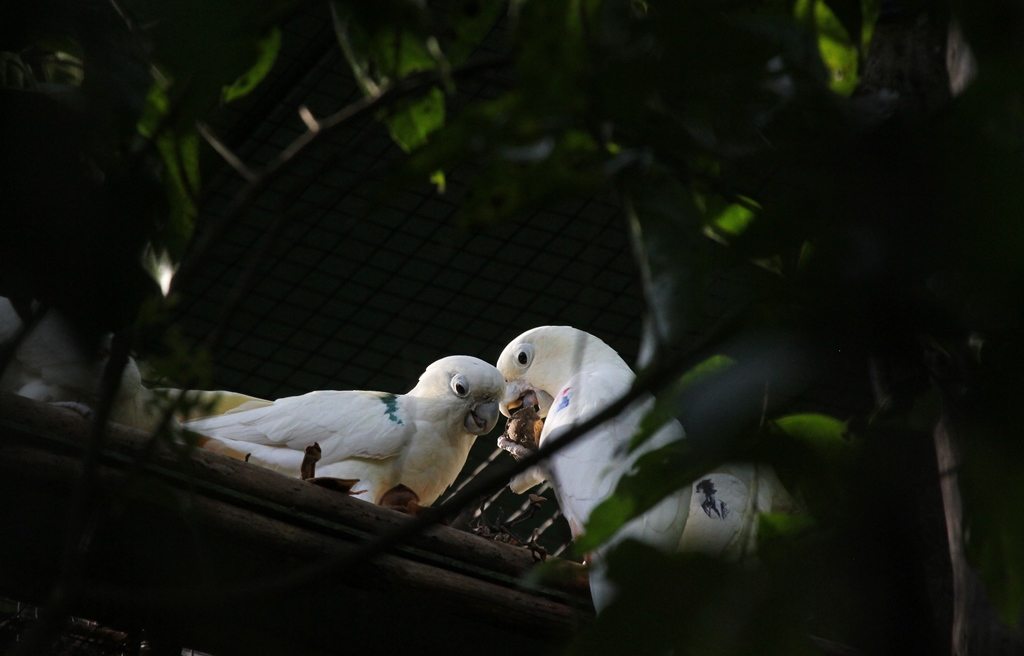
The participation of everyone is not an option; it is a must for things to happen!
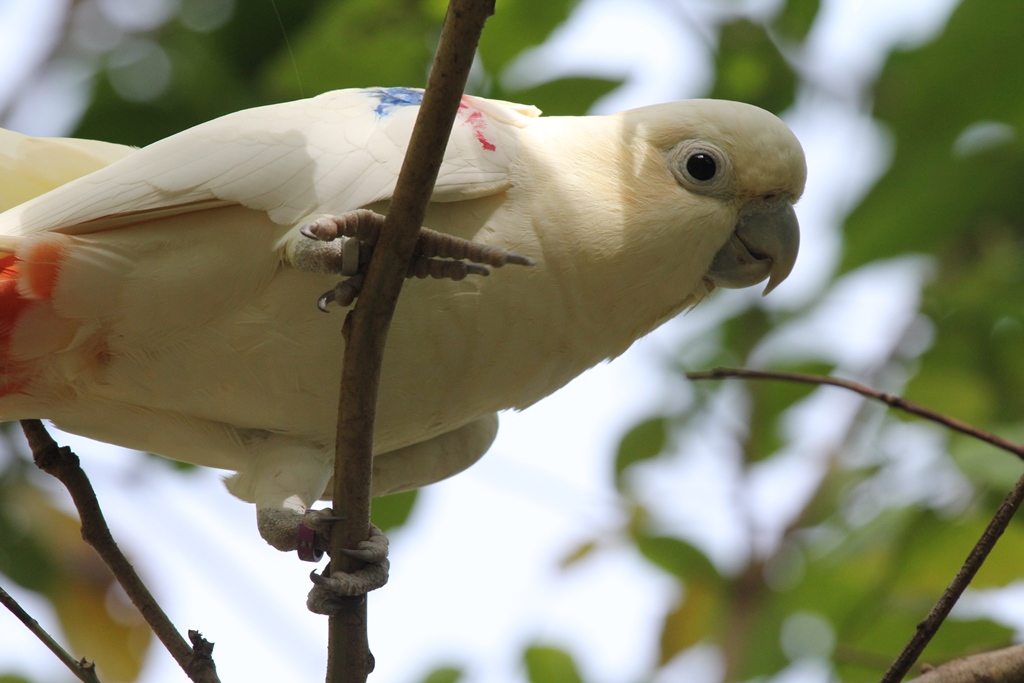
An emerging threat to giant armadillos has arisen in the Cerrado; where they’re raiding beehives and are considered bad luck and vermin to the local communities. Alex Zimmermann, Chester Zoo’s head of conservation science and chair of the IUCN human – wildlife conflict task force, has spent some time with Arnaud Desbiez (founder of the giant armadillo project) to research the situation further.
Alex and Arnaud met with beekeepers to get a preliminary understanding of the situation and planned a social survey to assess the scale and depth of this new conflict further. Watch this space for more updates from the project and how the team gets on with this new challenge facing giant armadillos.
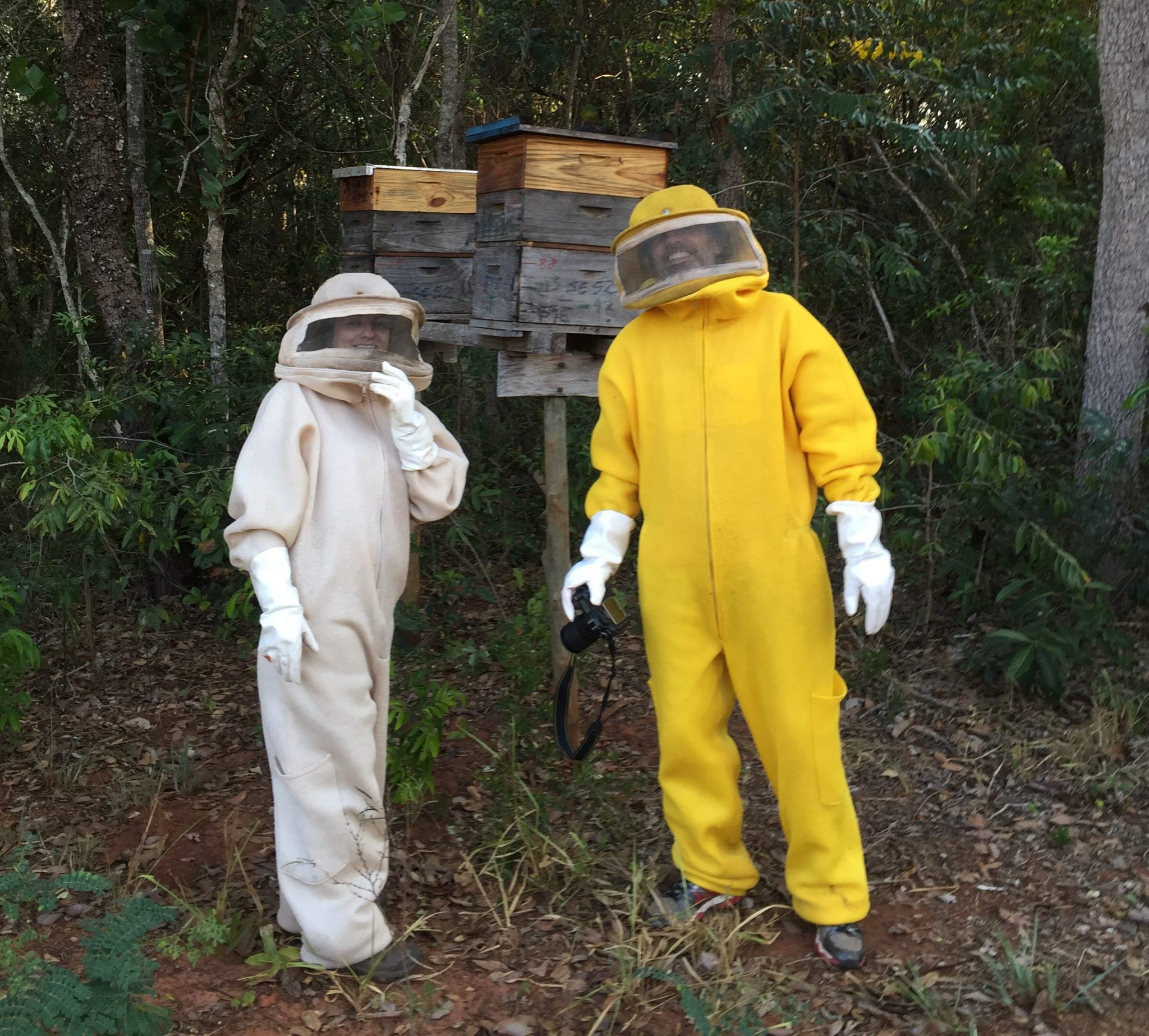
Below Arnaud tells us more about the other activities the project has been up to over the past few months:
“A lot has happened in the past few months; we ran two expeditions in the Pantanal and three in the Atlantic forest. Time was dedicated to launching and starting the Anteaters and Highways Project.
“The expeditions in the Pantanal were shorter than usual and work was greatly hampered by the rain and floods. This is not the time of the year to be in the Pantanal. The aim of this expedition was to retrieve five GPS tags that had fallen off giant armadillos. The water level of the flood plane had really gone up drastically – the team crossed with the truck once and then swam back and forth each day! It was very hard work, hard work, but rewarding and I’m very happy to report that all GPS tags were recovered. Unfortunately two of them malfunctioned and only recorded part of the data. This is very frustrating however there is some good news.
“Emmeline the new adult female we saw in January was photographed with a baby following her. Most importantly, Emmeline which was in poor shape when we caught her in January is now looking healthy and so much better. Our intervention and the treatment she received certainly benefited her. Due to the floods they were unable to spend time searching for Tim the baby armadillo, which was the star of the documentary that aired on BBC Two on 7 April.
“The team also checked on the three giant anteaters we are currently monitoring. In February, two members of the team went to the field to recover the 25 camera traps set up in December to finalize a camera trap grid. Last year we started testing a methodology to detect giant armadillos using an adapted grid methodology. Since last July, three grids were used. We will be analyzing results with the help of San Diego Global. In the meantime, we are happy to report that in the 100km2 area covered we detected all our known animals, as well as a few more. This is very exciting and once the data has been analyzed we will be using this adapted methodology to evaluate densities of giant armadillos in the Cerrado. It was very important that we learn how to place the camera traps to maximize the detectability of giant armadillos. We are relieved that all the animals known to use the particular area were found…next step is doing this density work in the Cerrado.
“We are very excited to announce that surveying for giant armadillos has now started in the Atlantic forest. We are using the same methodology applied in the Cerrado (field surveys, interviews and citizen science). Three expeditions have taken place so far. Survey results in the Atlantic forest have been depressing – only on the third expedition has the first evidence of giant armadillos in this biome been uncovered. It seems the animal has gone extinct, over 30 or 40 years ago in the areas surveyed. Few people from the older generation remember seeing burrows of the animal and hearing about it. You see, in this part of our state, land conversion started over 50-60 years ago. It is impossible not to get a bit depressed by the landscape and the stories or lack of stories people tell. Impossible not to think this is what the future of the rest of our state will be like if major changes are not made. There is a protected area where one person explained that two giant armadillos used to live. They then explained that they were both shot many years ago. In a tiny shop in the small town, the front paw with the giant claw of one of these giant armadillos is proudly exhibited as a trophy. So sad.
What is crazy is people seem to be fascinated by the species. Those who have heard of it speak very positively of it. More than ever I fear the giant armadillo will become a legend, almost a mythical species. We still have this amazing species in our state and we need to protect it.
“We are currently working with the governor’s office to try to get the giant armadillo selected as the symbol of our state. If we could make this happen it would be a game changer. We will continue lobbying until every door is closed. Even then we will try to dig under them…armadillo style!
“The documentary, Hotel Armadillo, (which aired on Fri 7 April) only shows the tip of the iceberg of all the work involved in running a conservation project. However, I do believe it highlights the important role of giant armadillos and shows beautiful images of this poorly known species. I hope to use these images as rallying cry for the species and biodiversity. Our work in the Cerrado is our daily reminder of what we stand to lose. Thank you so much to all of you that make our work possible. The project relies on the support and help from other zoos and organizations. None of this work would be possible without you. We are very, very, grateful. Thank you so much.”
We’ve been working with the project since it first began in 2011; but prior to the project, little was known about the species due to their low population numbers and elusive behaviour. This long-term ecological study has documented the important role the armadillo plays in the ecosystem.
We’re really proud to be working with partners like the Giant Armadillo Conservation Project, to help conserve precious species and their habitats. Ecological research is a really important part of conservation. It helps conservationists to keep a close eye on any changes and define the areas and species that in most need of help. Scientific research can help us learn more and help make a big difference in saving wildlife.
Bloom at Chester Zoo highlights the spaces at the zoo and the incredible wildlife that can be found within them. There are many gardens just waiting to be explored, each different from the last and each with their own story to tell.
Our horticulture and botany team work hard all year round to make sure the gardens and spaces not only look great but also play a vital role in conserving local wildlife.
The team recently created a Bumblebee Garden to help our fuzzy friends find vital food and shelter as bumblebee populations are disappearing at a worrying rate.
Below we take a look at some of the other work our conservationists are doing to help UK wildlife beyond the zoo thrive. We’ve highlighted a couple of their successes over the past 12 months…
BUMPER YEAR FOR DORMICE
The hazel dormouse is rare in the UK and, sadly, there has been a long-term drop in its numbers and range. We’ve been monitoring a wild dormouse population for over a decade. After a number of slightly below average years between 2012 and 2015, dormouse surveys at our study site in North Wales recorded a bumper year last year with more individuals seen in October 2016 than ever before!
This data is still being analysed, but it seems likely that 2016 is a year in which some females may have had two litters, and the first litter may have also bred themselves. These years are hard to detect, but micro-chipping the dormice gives us a unique opportunity to identify these uncommon behaviours, which are rarely confirmed in UK dormouse populations.
These bumper breeding years are thought to be critical for maintaining dormouse population levels, and it’s reassuring that 2016 looked like it was a great year!
TRACKING PINE MARTENS
Pine martens are thriving in Scotland, but in England and Wales the population is very fragile. Two years ago we joined forces with The Vincent Wildlife Trust on their pine marten recovery project, to restore viable populations of pine martens to Wales.
For the past two years the project has relocated pine martens from Scotland to mid-Wales. Once the animals are relocated they are given a ‘soft release’ to ensure that they’re given as much of a chance as possible to adjust to their new surroundings. The translocation has been very successful with 20 pine martens being relocated in 2015 and a further 19 individuals in 2016.
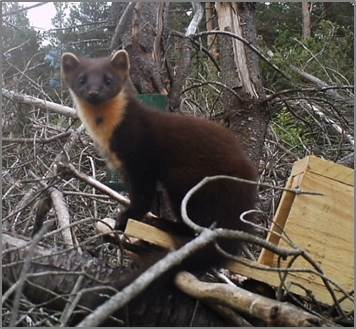
It’s not just about moving the animals; our staff help monitor the success of the translocation and the progress of the animals using camera traps, radio tracking and field surveys. These tracking methods enable the project to obtain further information so, for example, we know that at least half of the females released in the first year successfully gave birth in Wales which is an excellent result. The next stage of the project is to continue following this year’s released individuals, find out if they will also successfully raise young and to see which habitats are favoured for permanent territories.
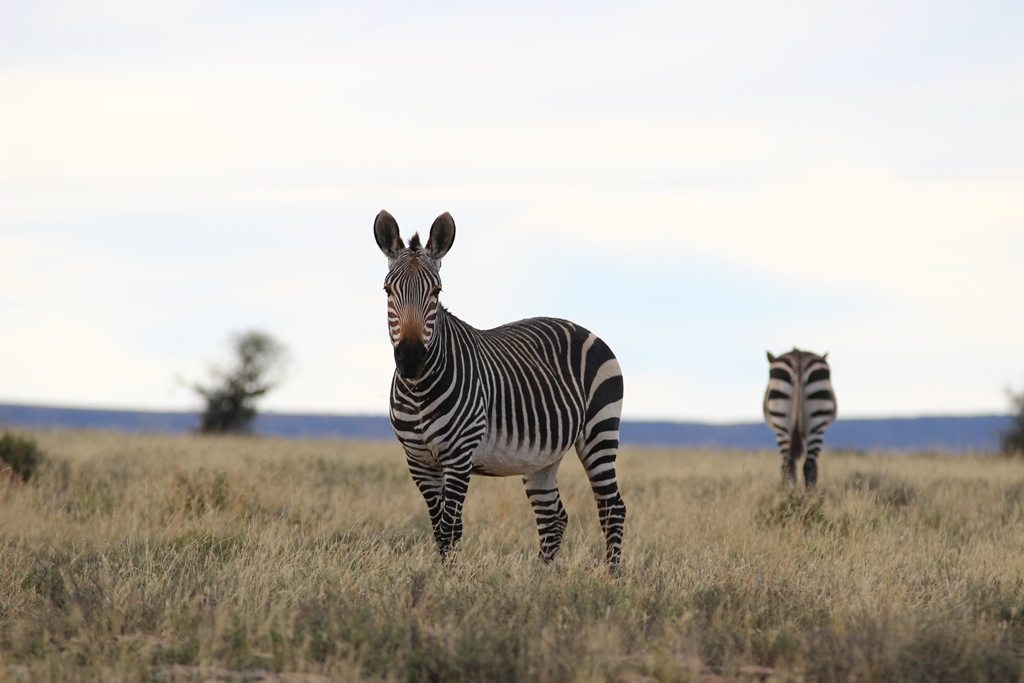
“A large part of my PhD research has focused on the Cape mountain zebra, a species endemic to the Cape of South Africa and listed as ‘vulnerable’ on the IUCN Red List. Cape mountain zebra provide an ideal study animal to look at possible ways to improve an on-going conservation strategy, as the zebra have now been actively managed for several decades. They have been conserved very successfully, recovering from less than 80 individuals in just three populations to over 5000 individuals today. However, many populations have very slow growth rates and too few individuals to risk translocations.
Collecting data
“Most of the current populations contain genetic information from just one founding population, and they are not well mixed. This is concerning, as we want recovered species to have long-term resilience to any future environmental or human-induced threats. Therefore, we set to figure out what was causing some populations to perform poorly.
“The first thing that is apparent about the Cape mountain zebra is that it has many disconnected populations across a wide range of habitat types, ranging from grassland to shrub-land to desert-like Karoo. We decided to use Geographic Imaging Software to map the vegetation types in each of the nature reserves where the zebra are found, and estimate how much grass was in each one. This is important as grass is a zebra’s primary food source, and acts as a measure of habitat quality for this species.
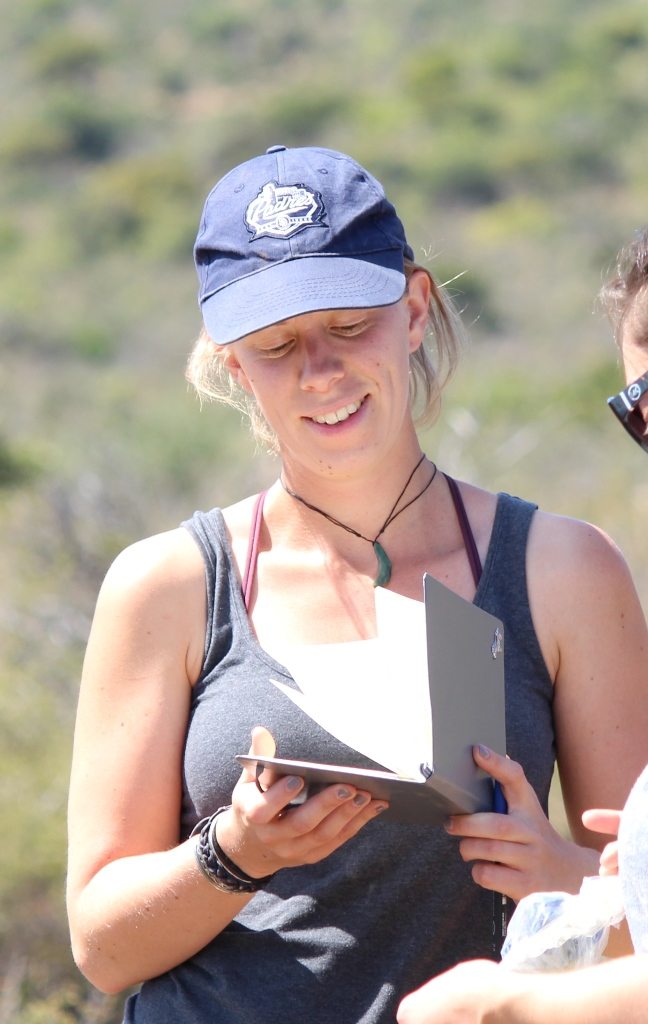
“In addition, we collected poo samples from zebra from six populations and looked at the nutrient composition as a measure of diet quality. Lastly, we collected census information about 21 populations to compare population growth rates, the density of individuals, and female reproductive rates.
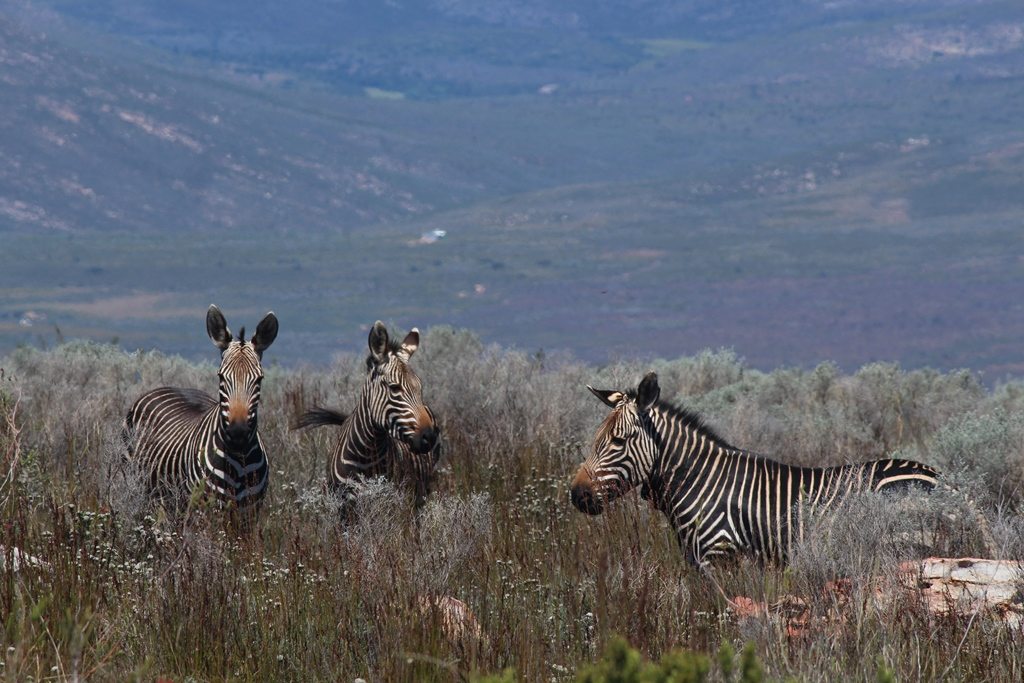
“We found that there was a lot of variation in grass abundance across populations, and that where grass was scarce it was also less likely to contain protein and essential elements. This is doubly worrying for zebra in these reserves as not only do they not have as much to eat, it’s also less nutritional. Finally, we found that zebra populations with a low abundance of grass had lower growth rates, occurred at lower densities, and had lower female reproductive rates. This means that zebra in populations with low habitat quality are reproducing less successfully, or at lower rates, and some populations may have already reached their carrying capacities.
“These results are interesting as the Cape mountain zebra has been actively conserved in these low quality habitats for many years. However, we think there is a misconception of where the Cape mountain zebra would have occurred, or the habitats it would have used, prior to displacement by humans.
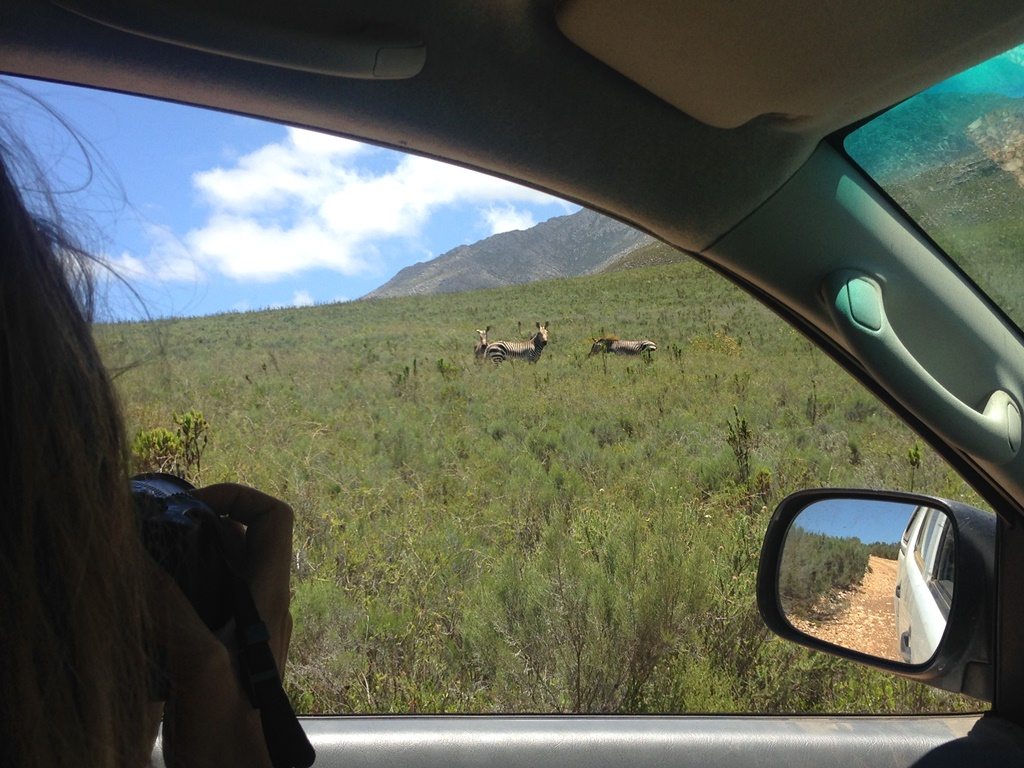
“It’s possible that this zebra would have migrated up and down the mountain slopes seasonally, however That’s not possible now as the lowlands were transformed for agriculture many decades ago. There’s now a misconception about where the Cape mountain zebra should be conserved, as in recent history it has only been found in areas less suitable for human occupation – in this case high altitude slopes.
“These are ‘refugee’ populations, and they may be prevalent in the animal world given the extent of land conversion and biodiversity decline. It will be important to identify species with refugee populations so that they can be effectively conserved and persist in the face of future threats.”
The next part of Jess’ PhD will be investigating stress hormones and testosterone using faecal samples in the Cape mountain zebra. Huge thanks to team zebra: Jessica Lea, Shelby Matevich, John Jackson, Prof Graham Kerley, Dr Sue Walker and Dr Susanne Shultz for Acting for Wildlife.
Earlier this year the IUCN congress caused ripples through the conservation world with announcements of the re-categorisation of hundreds of threatened species on the IUCN Red List.
Severely affected in recent years are our closest relatives, the great apes, with the IUCN recognising that all six species are under serious threat of extinction. Four of the six ape species are now classed as critically endangered which is just one step away from extinction in the wild.
The most recent re-classifications are:
Bornean orangutan
Following an assessment led by Marc Ancrenaz, scientific director at HUTAN (our project partners in Borneo), it was discovered that Bornean orangutans are one step closer to extinction in the wild.
We’ve been working with HUTAN to protect this species for over 10 years and will continue to fight to save it before we lose it forever. Orangutans are threatened by hunting and habitat destruction for agricultural land; mainly for the cultivation of palm oil.
Join the Sustainable Palm Oil Challenge and help save orangutans.
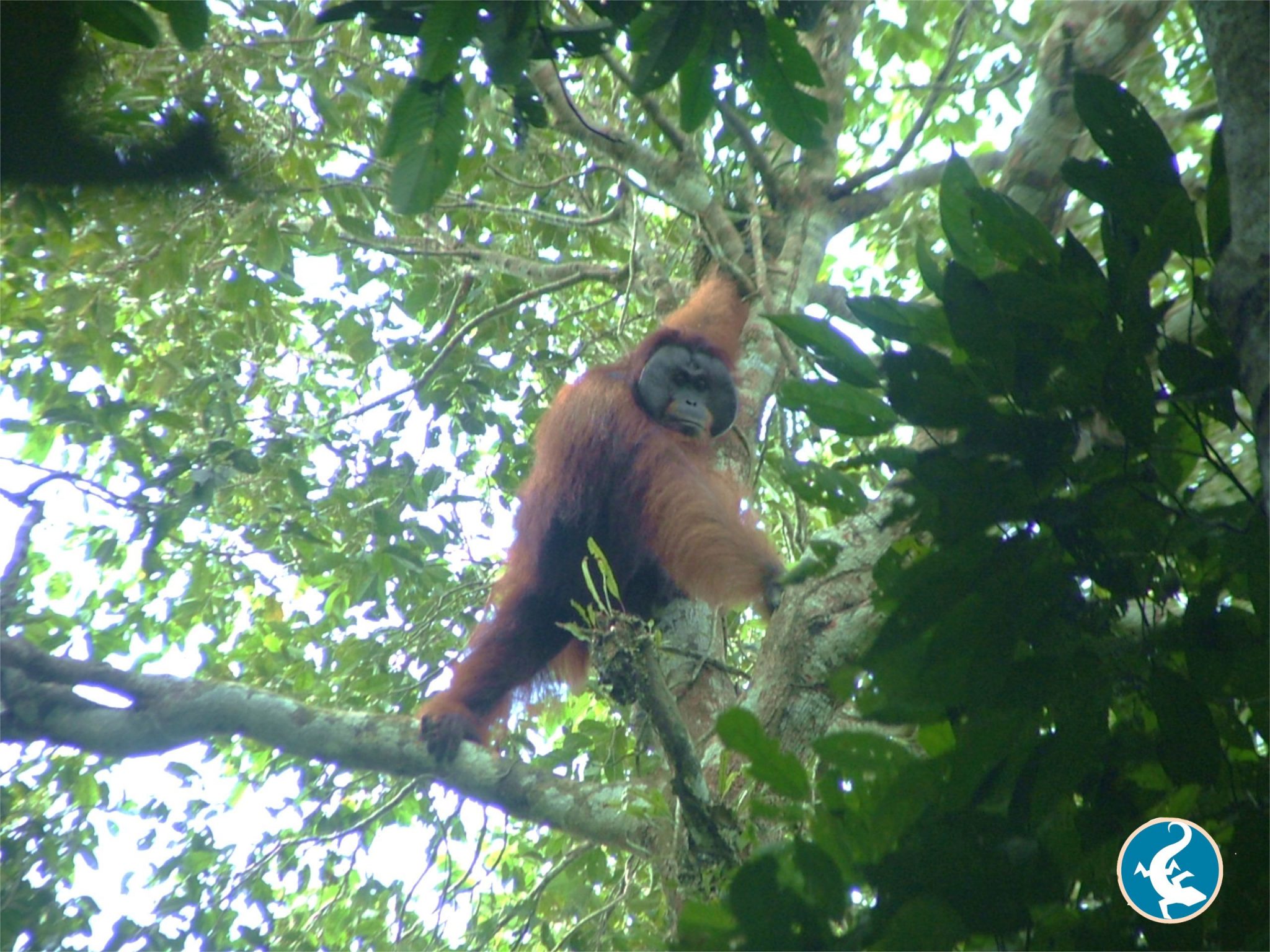
Grauer’s gorilla
The Grauer’s gorilla population has seen a catastrophic decline; the species has seen a staggering 77% decline in less than two decades due to illegal hunting for bush-meat associated with unregulated mining in remote rainforests.
Chester Zoo’s Africa field programme coordinator has worked extensively with Grauer’s gorilla and spent 11 years conducting significant research into the ecology of the species which has been used to classify it as one of the most endangered primates in the world. Read more about Stuart’s research, and that of other collaborating partners, here.
Western chimpanzee
The Western chimpanzee is a subspecies of chimpanzee and the same species we have at the zoo. Chester Zoo’s troop contributes to a successful international breeding program. This is the first ever chimpanzee subspecies to join the list of critically endangered great apes, making our group even more important. In the wild, these chimpanzees are under huge threats from bush-meat hunting as well as extensive and increasing habitat loss and fragmentation.
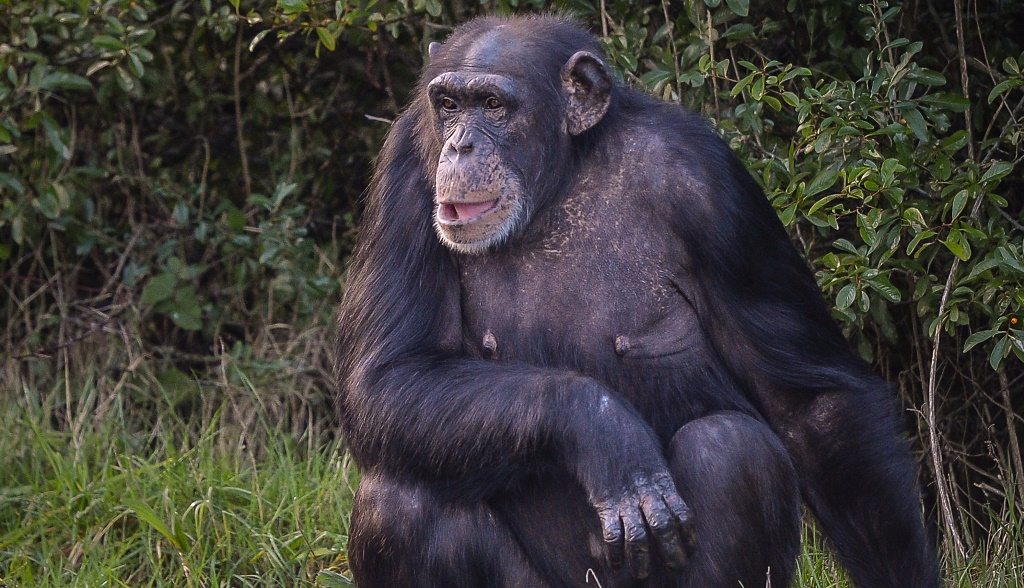
All other chimpanzee subspecies are facing similar threats, are listed as endangered by the IUCN including the Nigeria-Cameroon chimpanzee, which we’re working to protect the in Nigeria. Over the years, we have been conducting research in Gashaka Gumti National Park, Nigeria, monitoring and protecting the chimpanzees in Nigeria to ensure this species doesn’t have the same fate as the Western chimpanzee which is edging dangerously close to extinction in the wild.
Despite all of the above reclassifications, there were several good news stories reported at the IUCN congress, including the down-listing of the giant panda from ‘endangered’ to ‘vulnerable’ as a result of a significant population increase.
That’s why we must continue to Act for Wildlife. But to do so, we need your help.
Our lead keeper of lower vertebrates and invertebrates, Matt Cook, previously travelled out to Indonesia where he joined our field partners, the Komodo Survival Program (KSP), to conduct Komodo dragon surveys.

Flores is home to several populations of Komodo dragon which is listed as Vulnerable on the IUCN Red List; however the exact number of individuals is unclear. With our support, KSP have expanded their work further and are now in their second year of a complete population survey of the Indonesian island of Flores and its surrounding islands. At the end of the study, the data will be used to create a long-term conservation action plan for the Komodo dragon across the whole of Indonesia.
So far, two new populations of Komodo dragon have already been identified. Their latest discovery happened earlier this year on a small island off Flores called Longos where a previously undescribed population of the critically endangered yellow crested cockatoo was also discovered!
Surveying Flores is no mean feat – the island spans 5,228mi2 not including all the small surrounding islands which are also being included in the survey. The field team at KSP have sent us some incredible footage of Ontole island, it shows the type of terrain they have to tackle during their field work, plus we thought it was too good not to share with you.
The survey work is on-going so there is potential for even more discoveries over the coming months; we can’t wait to bring you more exciting news from this project!
We’ve been working with the Giraffe Conservation Foundation (GCF) for 18 months monitoring the Rothschild giraffe. Earlier this year our giraffe team leader Phil Molyneux travelled out to Uganda to support Dr Julian Fennessy, co-founder of the GCF, and vets from the Uganda Wildlife Authority (UWA) to collect genetic material from the giraffes in Kidepo National Park, Uganda. This information will make a huge contribution to our understanding of this isolated population of giraffe.
A recent landmark study led by Julian has found that there are four giraffe species rather than one; with Rothschild populations belonging to a new species – the “Nubian” giraffe. The discovery could help inform conservation efforts for all four species of giraffe.
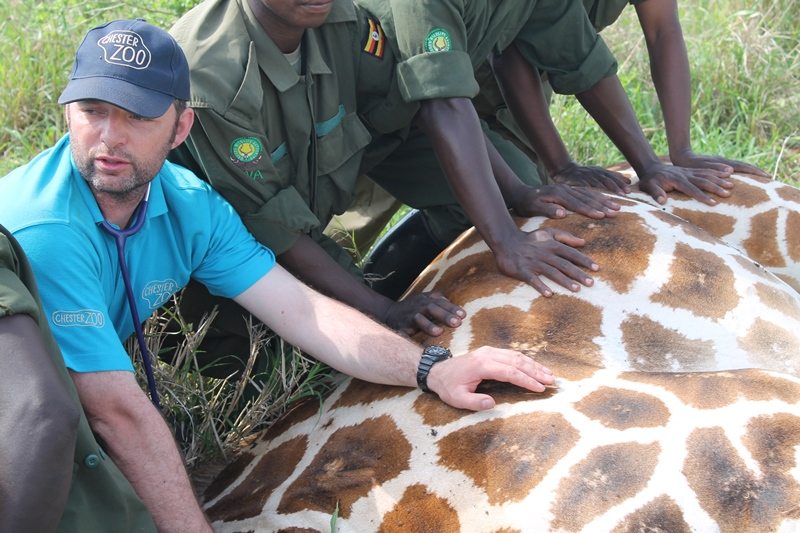
Among other important questions the samples collected by the team in Uganda will help reveal where the Kidepo giraffe population fits into this fascinating genetic puzzle.The team also fitted some state of the art monitoring equipment on two giraffes.
Phil tells us more about what he got up to on his trip:
Arriving at Kidepo
“Uganda has ten National Parks displaying a vast array of beautiful East African wildlife. Kidepo National Park spans 1,442 square km and is home to over 70 mammal species including African elephant, Burchell’s zebra and the beautiful Rothschild’s giraffe. I had nine days to spend in Uganda to help Julian Fennessey collect genetic material from the giraffes and fit two head collars.
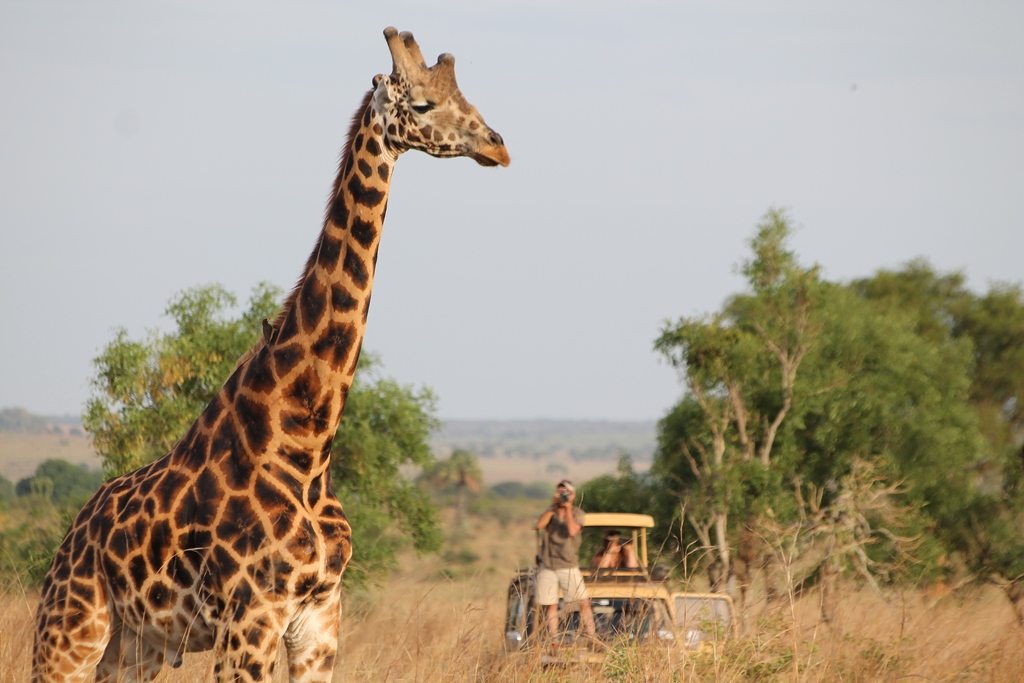
“My first view of Kidepo was from N’guru Moru camp where I was struck by the vast luscious green landscape filled with trees as far as my eyes could see. The park is protected by more than 70 rangers and there are several guarded check points to pass before entry can be gained. The park is home to more than 2,500 African buffalo and we managed to see several hundred soon after entering, followed by several zebra, eland and hartebeest – a truly magnificent sight.
Having worked with Rothchild’s giraffes at the zoo for over twenty years I was very excited to see them in the wild.

My first glimpse was truly magnificent. What surprised me was how far apart individuals were comfortably feeding from one another considering lions are frequently spotted in the park. I spotted one male giraffe from 3-4 km away and it was just possible to make out the outline of the bottom half of the giraffe through the binoculars. I thought giraffe would be easy to spot so I was surprised to see that they blended perfectly into a tree lined background. We had two very productive days, spotted 11 individual adult giraffes and covered more than 100 km of the park!
DNA Sampling
“A large part of my trip was helping the team collect DNA samples to gather vital information for understanding the relationships between individuals in Rothchild’s giraffe. Working with the Uganda Wildlife Authority and a small vet team, I spent a day collecting the DNA from as many giraffe as possible. It was amazing to see the team in action. The vet with the biopsy dart was driven within 60m of a giraffe and then fired the dart at the upper hind leg. The small dart then hit the giraffe tissue and a small biopsy is cut by the dart and is contained within the dart tip which then falls with the dart to the ground to be picked up.
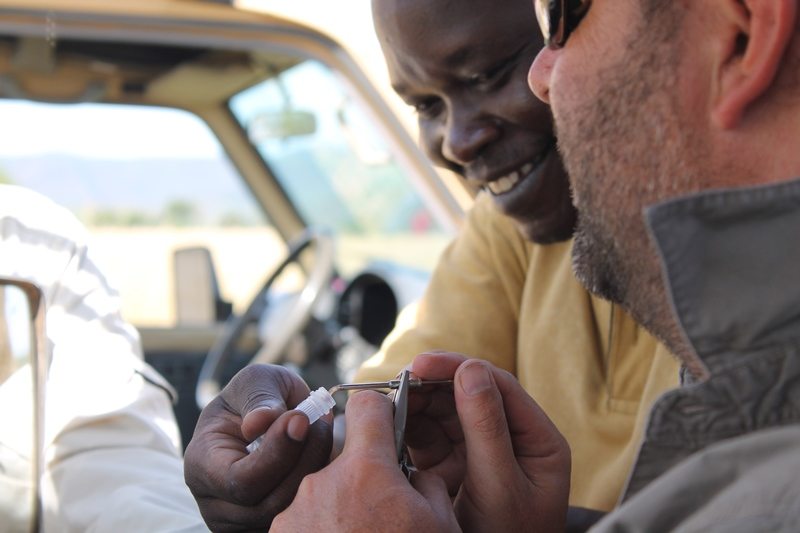
Fitting collars
“The day we fitted the collars we went out in three vehicles. We found a small group of five giraffe and an adult female without a calf was very carefully selected. Once chosen, the tranquiliser dart was administered and once the giraffe was secured and settled we proceeded to fit the GPS head collar. The GPS collar will send three signals a day when fitted to the giraffe and allow us to track long term movements over a two year period. This is vital to gain a greater understanding about the animal. A blood and tissue biopsy was taken and a number of measurements of the individual. All this only took 14 minutes from start to end. When the team finished the giraffe stood up, ran off and was soon joined by the rest of the herd.
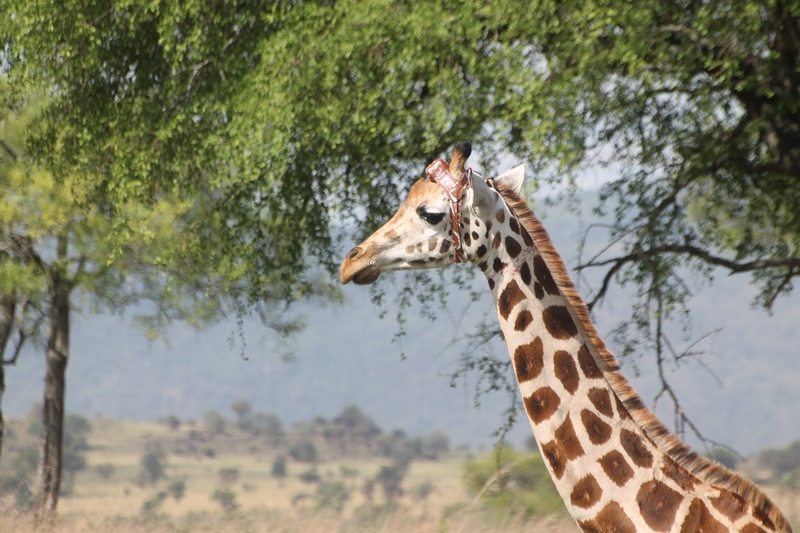
“The second activity we conducted was fitting a headcam to one of the giraffes; this particular camera collar is designed to capture over 100 hours of video throughout the day and night lasting approximately one week. The information collected will provide the team with vital information about the giraffe movements. The headcam was fixed between the ossicones (the two horns on the top of their head).
“I felt very privileged to be representing Chester Zoo and was very proud of what GCF, UWA and our team had accomplished over my nine days in Uganda.”
We are working alongside giraffe experts from around the world to create a conservation action plan to ensure that Rothchild giraffe populations don’t fall to even more critical levels.
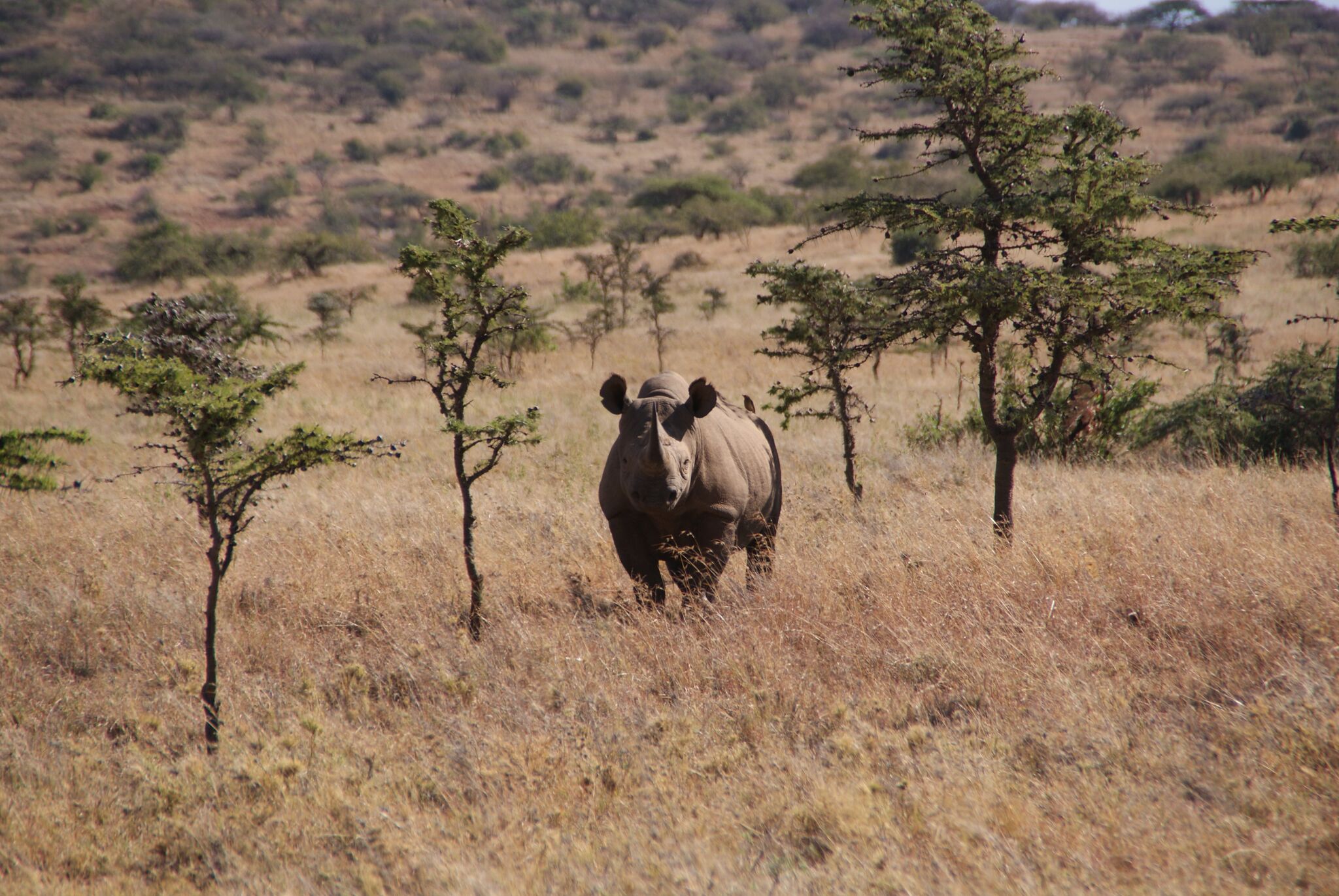
Donate to our conservation work in Africa
We’re working with zoos around the globe, international conservationists and the Indonesian government to support Asian wild cattle conservation in South East Asia. This is the first time the global community has joined forces with the Indonesian government to share expertise and resources for the conservation of banteng, anoa and babirusa.
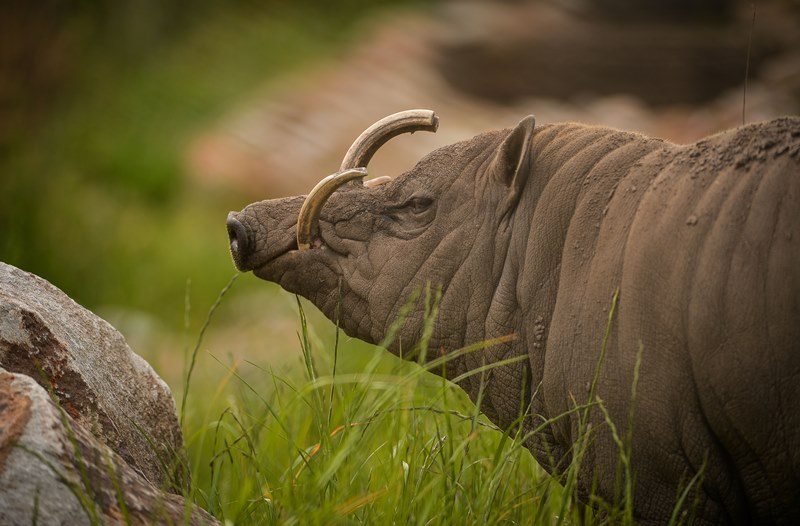
All these wild cattle species are threatened with extinction and together we want to reverse the dramatic decline in their population numbers.
It’s important that we share our expertise with other zoos and conservation projects around the world; strengthening the connection between the work being done in zoos and in the wild.
We have an active partnership with the IUCN Species Survival Commission (SSC) Asian Wild Cattle Specialist Group (AWCSG) – focusing mainly on the anoa, babirusa and banteng – which is made up of field experts, including conservationists, biologists and zoo professionals. The group is committed to sharing information, research results and conservation experience of Asian wild cattle.
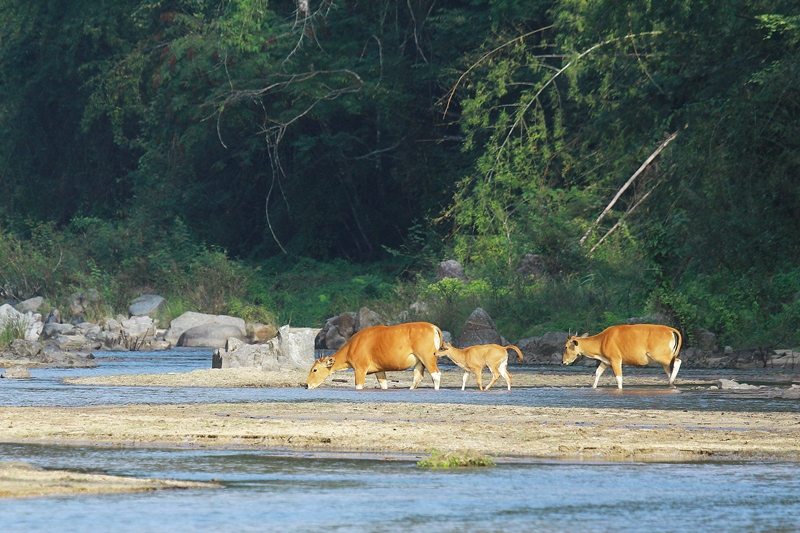
Our South East Asia programme coordinator and programme officer of the Asian Wild Cattle Specialist Group, Johanna Rode-Margono, recently spent time in Indonesia with Chester Zoo’s curator of mammals, Tim Rowlands.
The main objective of their trip was to strengthen our relationship further with other zoos in Indonesia and promote the importance of cooperative conservation breeding programmes in helping to save the three species; as well as finding opportunities to assist in building on husbandry practices and education activities.
Johanna tells us more:
The babirusa, anoa and banteng are all threatened with extinction mainly due to hunting and habitat loss – like human encroachment, plantations or mining. So any work being done to help protect them is vital.
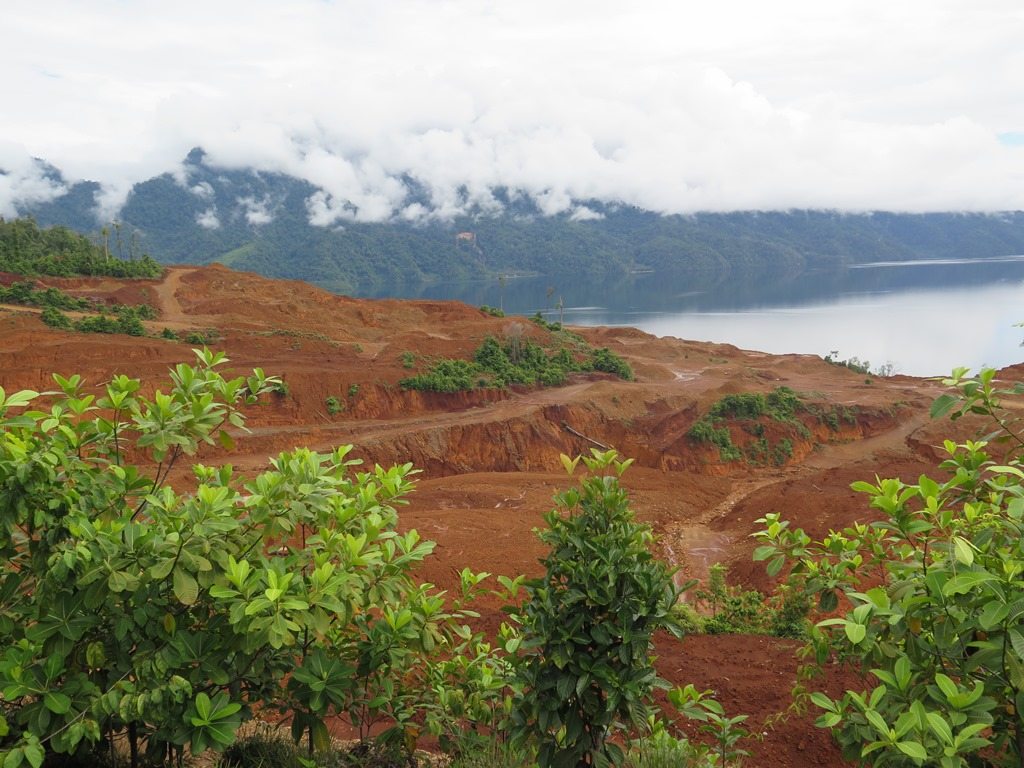
“Chester Zoo is one of the leaders in the conservation breeding of anoa, babirusa and banteng, our experts have important skills and knowledge that they can share and collaborate with others to ensure the survival of these animals before we lose them forever.
“By making sure there is a viable global population of these species in zoos, whose genetic diversity represents the genetic diversity in the wild, the global zoo community can play a vital role in saving them.”
Tim and Johanna spent time meeting other experts at seven Indonesian zoos to look at their husbandry practices and their current facilities in order to prepare an intensive keeper training workshop in 2017.
Tim explains:
Many zoos in Indonesia are already doing great work with keeping and breeding anoa, babirusa and banteng; but some still keep them in relatively basic conditions. Cooperative conservation breeding between zoos in Indonesia has not been done intensively, partly due to lack of facilities but also the lack of understanding of the benefits it can bring to the species as a whole.
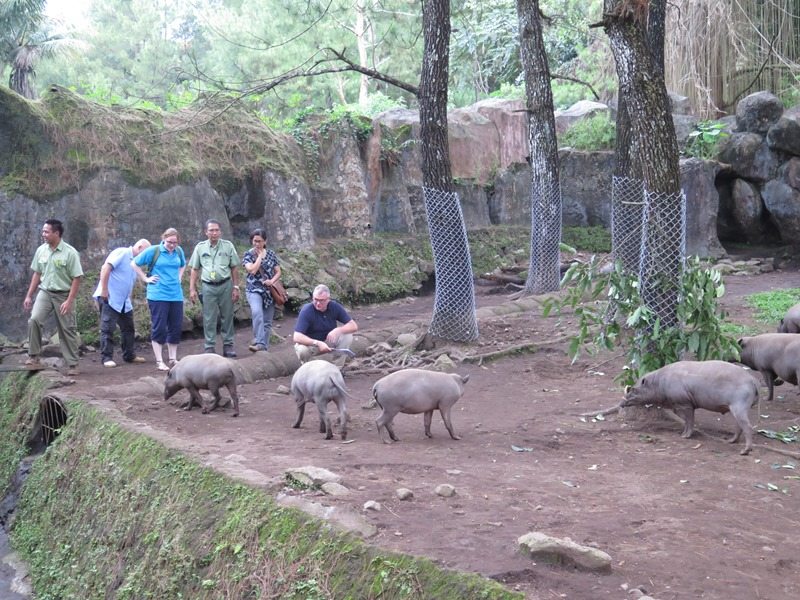
“It takes time and diplomatic discussions to explain to some Indonesian zoos the bigger picture and how conservation breeding is an important part of saving endangered species. But it’s worth the effort.”
Johanna and James Burton, chair of the AWCSG, also conducted surveys on the islands of Sulawesi and Java, to find potential location for future in-situ field projects. Together with the AWCSG, Chester Zoo wants to develop several long-term field projects in South East Asia that contribute directly to the conservation of the species in the wild.
The surveys will continue over the next few months to ensure the greatest impact and next year we aim to start a new project.
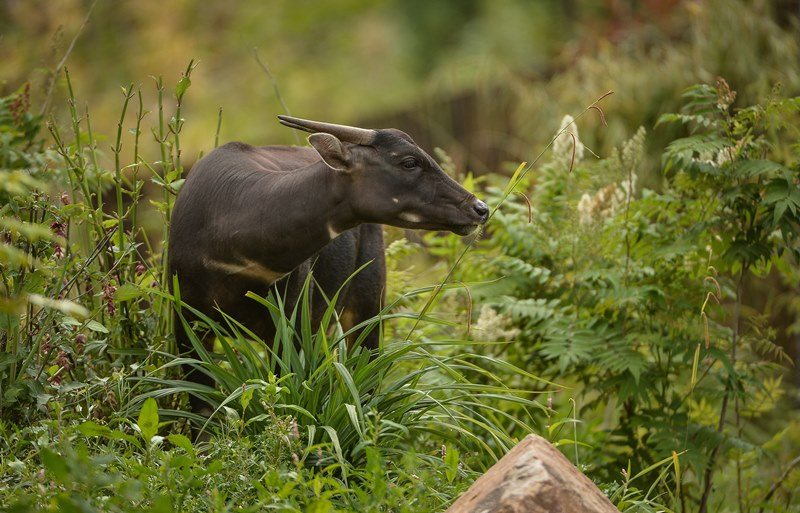
Johanna continues:
“We have not seen any wild anoa and babirusa. Apart from the fact that they are elusive and rare species, by talking to conservation authorities and local people we got the feeling populations are declining fast. It is time to act! In contrast, we have been lucky enough to see banteng in some National Parks. Although just a few hundred are left, we could observe around 70 animals in one grazing ground. This was a very emotional moment for the team.”
We’re looking ahead to the new year – when we will be running training workshops on facility design and animal husbandry in Indonesian zoos. Tim will be leading these activities sharing the extensive skills he has developed through working at Chester Zoo; sharing them to help the global conservation of anoa, banteng and babirusa.
Keep an eye on our blog for more updates about our conservation work with Asian wild cattle.
Modern technology is enabling conservationists to develop new techniques that improve the accuracy and value of surveys and scientists are constantly developing new and better ways of monitoring species in the wild.
We’ve been working with partners in the field to help develop an impressive piece of software that will help identify an individual cheetah through its footprint. The software has been developed to support ecological large carnivore studies and monitor endangered elusive species in Africa.
The cheetahs at Chester Zoo played an important role in helping produce this complex piece of technology. By collecting digital cheetah footprint data the project has been able to develop the reference input algorithm for the software, producing a simple and non-invasive monitoring tool suitable for robust censusing of wild cheetah populations across Africa.
The footprints from the cheetahs at the zoo were used to test these software algorithms to make sure they were able to correctly identify individuals.
The technology was developed by WildTrack and similar footprint ID software has already been successfully developed for other carnivores such as tigers, lions, polar bears and pumas. The Footprint Identification Technique can identify the species, individual, age and even its sex, and is now available to cheetah researchers across the African continent, free-of-charge.
This is just another example of the important role zoos play in helping save endangered species; using science and technology to design better ways of monitoring species in the wild.
